
Take a copy

















Female nudity in art: pornographic or profound? pg.24











e Independent Student Newspaper since 1947







In conversation with Diane Abbott pg.10







Take a copy




























e Independent Student Newspaper since 1947












“at least £230 000”.
Hugh Jones Senior News Editor
e University of Cambridge has applied for a High Court injunction prohibiting pro-Palestine protesters from occupying their head o ces.
If the University is successful, protesters will no longer be able to enter, occupy, or interfere with access to Senate House and its lawn, the Old Schools, and Greenwich House “for a purpose connected with the Palestine-Israel conict.” A hearing has been scheduled for next ursday (27/02).
Protesters “may be held to be in contempt of court and may be imprisoned or ned or have [their] assets seized” if they breach the injunction, according to court documents. But, internal University discussions noted that the order does not “criminalise” further protests.
According to the minutes of a meeting of senior University o cials earlier this month, if the order is breached “it will then be a matter for the University to consider whether to institute proceedings for contempt of court against.”
e University has consistently rejected suggestions that their response to the protests infringes on the activists’ freedom of protest.
A spokesperson for the University previously told Varsity: “Any claim that the University is trying to restrict protest is ridiculous. ere are many ways protests can take place and voices can be heard, but the actions we are taking will protect the right of other members of our community to graduate and for sta to carry out their work.”
e University told the court that if occupations continued, the “irreparable harm” done to Cambridge and its stakeholders “cannot be adequately compensated in money”. According to a sworn statement by Emma Rampton, the University’s registrary, the occupations of Greenwich House and Senate House lawn last year cost the University
is went towards additional security and the cleaning of Greenwich House after the occupation ended, including an electronic security sweep. It also included “substantial” legal costs related to the University’s application for an interim non-disclosure order against protesters who accessed con dential documents.
e University also cited disruption to graduations caused by the Senate House occupation as justi cation for the order. In May 2024, the graduations of over 1,000 graduands, with over 2,700 guests, were disrupted when Cambridge for Palestine (C4P) occupied Senate House Yard, with ceremonies being moved into colleges.
Last November, more than 500 graduands also had their degree ceremonies disrupted when the occupation restarted, forcing ceremonies into Great St Mary’s church.
e University said that this disruption caused “signi cant stress” for University and college sta , and had a “signi cant adverse impact” on graduands and their guests. It warned that in the future it might not be able to source alternative buildings at short notice.
Rampton also outlined the broader harm caused by last term’s occupation of Greenwich House. In particular, Rampton identi ed concerns about activists accessing con dential or commercially sensitive information while occupying the buildings, after activists were observed accessing restricted areas of Greenwich House, and opening and searching through locked cabinets.
She noted that Cambridge generates a turnover of over £500 million each year from research grants, which could be jeopardised if the University cannot maintain its obligations to safeguard condential information.
ese concerns led the University to seek and obtain High Court orders
Continued on page 3 ▶


Studying in Cambridge is an experience we’re often told will shape us for the rest of our lives. Despite spending only nine short, intense terms here, the people we are, the relationships we make, and the lives we live will have a Cambridge-shaped watermark on them long after graduation. Taking a long view of our time here, especially in the depths of Week Five when days seem to last for years, can provide a new perspective on the intensity of a Cambridge term. inking about students who found love in Cambridge (pg.20), or the unexpected habits we keep from our time here (p.12), o ers a reminder of the side of Cambridge which is often taken for granted, but which lives on past our degrees.
Uncovering new sides of Cambridge can lead us down unusual and exciting paths, such as the University Baseball Club’s rise to stardom (pg.31).
Appreciating Kettle’s Yard in a new, multimedia light (pg.26), alongside exploring the treasures hidden within the local theatre scene (pg.28), allow us to explore Cambridge’s dynamism, as a city as well as a University.
is dynamism creates an environment of tension, change, and division. Freedom to protest and freedom of speech are essential in current discussions about freedom of expression. e University’s request for an encampment ban (pg.1) and Selwyn’s decision to defend keeping up controversial comments under a Pride ag Facebook post (pg.6) demonstrate the caution that must be taken when tackling these issues. Some issues must, however, be tackled head-on. Diane Abbott’s re ections (pg.10) on a continued culture of racism in politics highlights how inaction can often hold us back. e gender attainment gap in last year’s English exams (pg.4) demonstrates the need to address insti-
tutional inequalities. ese discussions are happening concurrently with debates around female nudity in art (pg.24) and the music industry’s systemic bias against women (pg.26). While we still have a way to go, progress is being made, with the introduction of new initiatives in the city (pg.14) being a start in making women in Cambridge feel safer at night. This point in term is often met with dread, but the lighter days and
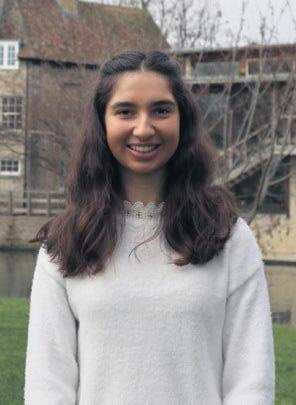

editors Sophie Denny &WilfVall editor@ varsity.co.uk
deputy editors MaddyBrowne&Isabella Steinmeyer deputyeditor@varsity.co.uk
vulture editors Sophie Ennis & Ezra
crocuses emerging on the backs remind us of our city’s beauty, and the precious short time we have to make our mark on Cambridge, and for Cambridge to make its mark on us.


Access achievements
Want to share your thoughts on an article? Send us a letter to letters@varsity.co.uk
In response to ‘Cambridge’s outreach departments deserve some love’ (14/01/2025)
Dear Varsity, As someone who works in access and outreach, I loved reading this article! I’m glad that students nd outreach ful lling; without the help of dedicated, helpful student ambassadors who are willing to give up their time to do these events, we wouldn’t be able to do half of the things we do. On behalf of all of us who do outreach - thank you for showing up, being friendly, and answering all the questions that students have about university, it means a lot both to us, and to the schools that we work with!
Emily Lawson-Todd
St. Catharine’s, School’s Liaison and Outreach O cer
Psyched out
In response to ’Two thirds of Cambridge researchers employed on ‘precarious’ temporary contracts’ (23/06/2024)
Dear Varsity, Within the psychology department, particularly since the pandemic, there
is a pervading culture from fellows and UTOs that our intellectual work belongs to them, our contracts are often cut short to ensure someone new can take over and thus the work (code, coding, laborious data annotations) belong to our PI and they can retain the glory and publication rights. When we try to claim our work, it is belittled and portrayed as not yet publishable, then quickly passed on to a new person or a PhD/MPhil student, enriching the university and the lab at our expense. Ironically, the Psych department culture, especially felt for visa vulnerable international postdocs, sidetracks mental health and balance for platitudes and the idea we should express gratitude to have gotten to somewhere like Cambridge so late in our careers, even when we come in with publications, skills and work ethic.
Anon.
Psychology postdoctorate student
Cornish contempt?
In response to ‘Daphne du Maurier’s demonised Cornwall’ (25/02/2025)
Dear Varsity, As Daphne’s eldest grandson, who spent my childhood at Menabilly and Kilmarth, where my grandmother lived from 1943-1969 and 1969 to her death in 1989, I do not recognise your thesis. Her strengths as a writer were her ability to convey a sense of place and atmosphere. She never dismissed ‘local people to total insigni cance.’ She had great respect for Cornish people, their resilience, sense of humour, and love for their county. I remember her outrage at the Torrey Canyon oil spillage and environmental disaster in March 1967, which ruined the Cornish west coast. Cornwall holds a special place in the nation’s a ections. And rightly so. I agree, Daphne and TV series like Poldark have clothed that a ection in a shroud of nostalgia. But I do share my grandmother’s sadness that, without tourism, Cornwall’s economy would struggle.
Paul de Zulueta
Lose the label
In response to ‘ e etiquette of inequality at Cambridge: making tradition inclusive’ (24/01/2025)
Izer magazine@varsity.co.uk
news Hugh Jones & AnukWeerawardana (Senior); Elizabeth Bratton, Lili Fairclough, Charlie Rowan & Evie Selby (Deputy) news@varsity.co.uk
investigations leads Eleanor Dougan & Nick James investigations@varsity.co.uk
comment Elsie McDowell, Rosie Roberts, & Daisy Stewart Henderson opinion@ varsity.co.uk
features Georgie Middlemiss & Calum Murray features@varsity.co.uk
interviews Ethan Cain & Varun Ravikumar interviews@varsity.co.uk
science Ruby Jackson & Teymour Taj science@varsity.co.uk
sport Barney Blackburn & Joss HeddleBacon sport@varsity.co.uk
lifestyle Ellie-Mae Buckley & Loveday Cookson lifestyle@varsity.co.uk
arts Ben Birch & Madelaine Clark arts@ varsity.co.uk
fashion Maddy Gamble & Gina Stock fashion@varsity.co.uk
fashion shoot co-ordinator Holly Hardman
film & tv Ines Goes-Maliere & Ismail
Sheikh lmandtv@varsity.co.uk
music Daisy Bates & Ben Curtis music@ varsity.co.uk
theatre Bethinn Feeley, Zach Lonberg, & Milly Kotecha theatre@varsity.co.uk
photography editor Amika Piplapure
illustrations editor Jessica Leer
sub-editors Maya Kunchur (Chief) & Arjola (Lola) Sadikaj subeditor@varsity.co.uk
associate editors FelixArmstrong,Grace Cobb, Hannah Gillott, Alice Mainwood & Erik Olsson associate@varsity.co.uk
business manager Mark Curtis business@ varsity.co.uk

Dear Varsity, Seeing students as “disadvantaged” is a condescending label, and is also counterproductive. Far better than these schemes would be a course on communication skills for all. As a teacher of English and a Consultant in Interpersonal Communication Skills I’ve found that results can be achieved within a term, where student gaining the skills to contribute in seminars leads to improvements in their work. As a student I waited to contribute in a Seminar, only to fail to interject with my comment while it was still relevant. However, due to the structure of my course I soon learnt how to join in and express my thoughts. It’s important to realise that labelling is counter productive. Yes, I was from a disadvantaged background, although I didn’t see it as that! So please, think again, and do something more productive.
Vivien Plews Freelance communication consultant
All letters to the Editors will be published online in our comment section.
varsoc president Felix Armstrong president@varsity.co.uk
varsity board Dr Michael Franklin (Chairman), Dr Tim Harris, Michael Derringer, Mark Curtis (Company Secretary), Felix Armstrong, Hannah Gillott, Hugo Gye & Erik Olsson-Ferrer (Directors), Lotte Brundle (Guest) & Zoah Hedges-Stocks (Guest)









Continued from front page prohibiting protesters from sharing information they obtained while occupying Greenwich House last year.
On 6 December, the day the Greenwich House occupation ended, Mr Justice Trower ordered protesters to hand documents which they took during the occupation over to the University’s solicitors, and to destroy any copies they made.
£500m
he University’s yearly turnover from research jeopardised if conidential information is not safeguarded
he judge also ordered the activists to conirm to the University that they had handed over all information in their possession, and destroyed all copies. he protesters were also ordered to identify anyone with whom they had shared the information.
In a subsequent hearing, also at the High Court, held on 13 December last year, Mr Justice Mann reiterated that: “he Defendants must not use, publish or communicate or disclose to any other person” any information “accessed or obtained during the course of the occupation of Greenwich House”.
It is not known whether the protesters complied with the orders. Last Friday (14/02), the University applied for a further hearing to take place in April. It also asked for permission to make a witness statement explaining the indings of an ongoing audit assessing which documents in Greenwich House were accessed by the activists.
In addition to this, the University authorities have been trying to ascertain the identities of those who occupied Greenwich House and Senate House lawn last year.
According to Rampton’s witness statement, Cambridge has been procesing CCTV footage, C4P’s Instagram posts, and photographs taken by University staf and security to try to identify students. his process has included passing images to Senior Tutors and Head Porters who were willing to assist with this process.
he University also considered identifying protesters occupying the building using WiFi access data from Greenwich House, but decided against it, as passersby could be unwittingly captured on those logs.
Rampton added that the University was concerned that sharing images of occupiers more widely, such as via a website, carried “a high risk of misidentiication and possibly victimisation”.
If the defendants breach the order, they “may be held to be in contempt of court and may be imprisoned or ined or have [their] assets seized,” according to court documents.

1,000
he number of graduands whose graduations were afected by the May 2024 encampment
She also said that the University had only identiied one protester so far, who they are not naming because “it would be unfair to single him out and to subject him to the media attention that he might get”. It is not known if this individual is subject to other disciplinary proceedings.
Greenwich House contains several of the University’s main administrative departments. he pro-Palestine activists oc-
cupied the site last term to protest Cambridge’s response to the conlict in Israel and Gaza. hey called on Cambridge to condemn “genocide” in Palestine, and to divest its holdings in companies which support the Israeli war efort.
Speciically, the occupation came in response to C4P’s belief that the University was reneging on an agreement made with the group, in which C4P dismantled its encampment on King’s Parade in exchange for the University agreeing to review its investments in arms companies.
hat review is ongoing, but on 14 November last year, the University published a statement on the status of the working group, which acknowledged a delay to the group’s work, claiming that
its initial “timescales” for reviewing its weapons ties were “optimistic”. his statement was criticised by students and academics, who accused the University of “back-pedalling” and “watering down” its commitments.
In response to the subsequent occupation of Greenwich House, and the renewed occupation of the Senate House Yard on 27 November, the University removed two C4P representatives from the working group conducting the review into arms investments. hey were reinstated following the end of the occupation.
At the time, Emma Rampton said: “Dialogue cannot proceed while signiicant parts of the University are subjected to disruption and occupation.”
Tensions rose further when C4P claimed that on 2 December students occupying the building had been threatened with “permanent or temporary exclusion from the University”. It is not known whether such action was taken. he occupation ended shortly afterwards, on 6 December.
his was not the irst time that Greenwich House has been occupied by activists. In 2018, Cambridge’s Zero Carbon Society occupied the building in order to push the University to commit to divesting from fossil fuels by 2022.
After seven days, the University obtained a court order enabling them to evict the occupiers, who were then physically removed from the building by bailifs.
Nick James Investigations lead Lord Martin Rees, a former Master of Trinity College, told Varsity that “campaigns for divestment – and fussiness about the source of donations – have gone a bit too far” amid ongoing debates in Cambridge over the divestment of fossil fuels and arms.
Rees was the Master of Trinity College
from 2004 to 2012 and sits in the House of Lords with no party ailiation. He is known for his pioneering work on galaxy formation, quasars, and black holes, and is also the ifteenth Astronomer Royal, the most prestigious post in British astronomy.
He told Varsity: “My personal view is that the morality of investing in fossil fuels or defence depends if you have any inluence.”
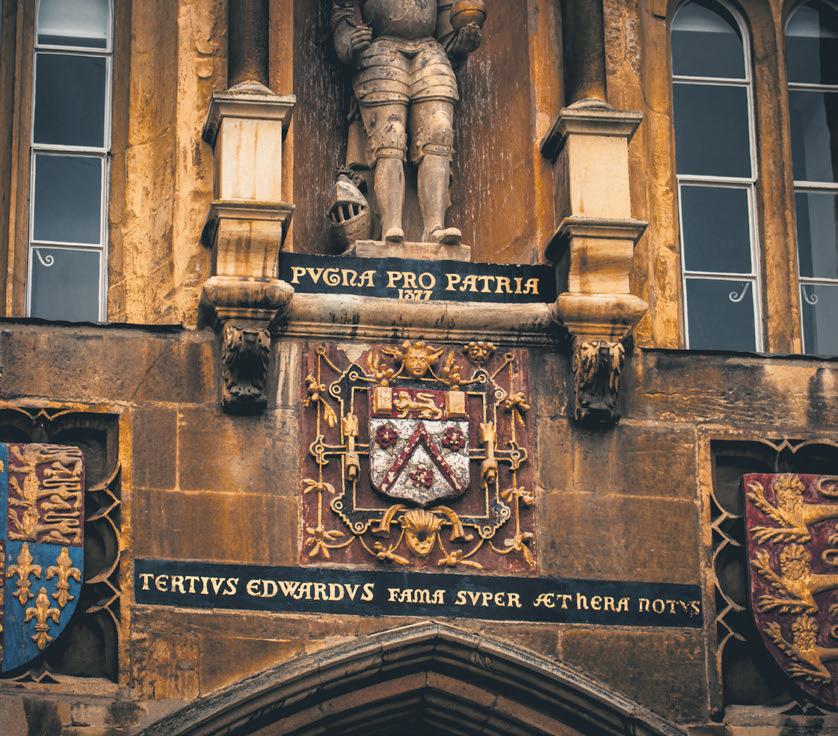
“On fossil fuels, if we disinvest […] that’s nothing to Shell or a big company like that. And if one wants to have a benign inluence in making companies greener, then an inluential person going to their shareholders’ meeting and making a speech will have more impact than taking away 0.1% of their shares which are likely to be bought by a less punctilious investor.”
Rees continued: “So, I do think it is an acceptable choice to go on investing in these fossil fuels, but that gives the University an obligation to campaign that they should become greener.”
Over the last few years, many colleges have made the decision to divest in fossil fuels, including Trinity, where Rees is a fellow. Trinity has committed to fully divest from the sector by 2031, and Corpus Christi, Pembroke, and Newnham have all made similar pledges.
he University has also pledged to fully divest from fossil fuels by 2038 as a part of a “net zero” plan to ensure that its £3.5 billion endowment does not have any direct investments in fossil fuels.
Commenting on investing in arms companies, Rees said: “Especially given the present state of the world, I think it would be unreasonable not to support any defence company, unless one is going to take a complete paciist view.”
Ongoing debates over arms companies are happening across the University in response to the war in Gaza.
Trinity College recently announced
that they are backtracking from divestment in arms companies after the Master, Dame Sally Davies, told students that there was a “consensus” in the College against cutting ties with defence companies.
When discussing the College’s policy on foreign conlicts, Davies also suggested that the decision to set up a fund supporting Ukrainian students had been a “mistake” due to the precedent it set for the College responding to humanitarian crises.
he College cut ties with all Russian companies following Russia’s invasion of Ukraine in 2022, and set up a £250,000 response fund to support afected students.
Trinity holds investments in multiple arms companies, including Elbit Systems which produces 85% of the drones and land-based equipment used by the Israeli army.
Days after the announcement, an “emergency rally” was organised by students to express “anger” at Trinity’s decision to backtrack.
At the end of November, the activist group Cambridge for Palestine also occupied Greenwich House, where the University’s inance oices are located, demanding that the University “immediately carry out an aggregate analysis of its investments”.
he group had previously set up an encampment outside King’s College, which they had agreed to dismantle in early August following the University’s
promise to review its arms investments.
In response to Rees’s comments, the Trinity College Student Union (TCSU) and postgraduate (BA Society) students’ union shared a joint statement with Varsity, saying: “As representatives of Trinity College’s student body, we will not comment on the personal views or opinions of individual fellows or members of the college. However, regarding Trinity’s investments, we would like to refer to the open letter signed and circulated by the BA Society and TCSU in November 2024 calling for divestment from the arms industry.”
“his was concomitant with students’ concerns about Trinity’s investment in companies complicit in the humanitarian crises in Gaza. As we wrote in that letter, we hold that investment in arms companies is directly antithetical to our College’s professed aims as an institution of higher education and research. We intend to continue advocating for ethical investment at Trinity,” the statement continued.
Rees also spoke to Varsity about the decision last May for the Hay book festival to drop their main sponsor, Baille Giford. his was prompted by boycotts from authors over the investment manager’s links to Israel and fossil fuel companies.
“I thought the authors were being a bit unreasonable because Baille Giford is not an especially wicked company and in any case the money would have been used for a very good purpose,” Rees said.
Trinity College was contacted for comment.
Sophie Denny Editor-in-Chief
e gender attainment gap for Part IB English exams reopened in last year’s exam cycle, according to the English Faculty examiners’ report. is was most notable “at the upper end,” with 21% of female-identifying students achieving a First as opposed to 32% of males.
While females’ average score was 64.26, lower than the overall average of 64.78, the average for male students was 66.14. Females were also “signi cantly likelier to get a 2.2 (14%) than were males (5%)”.
In contrast, the gender attainment gap for Part IA students, now in their second year, closed. e average female score was 64.52 compared to 65.06 for males, while the average mark across the board was 64.94.
Unlike in Part IB, more female-identifying students than males achieved a rst, at 22% in comparison to 15%.
Female candidates “speci cally outperformed males” in their Shakespeare portfolios, with 27.08% to 13.16% gaining a First.
Eloise Davis, English Faculty student representative, said that “it seems
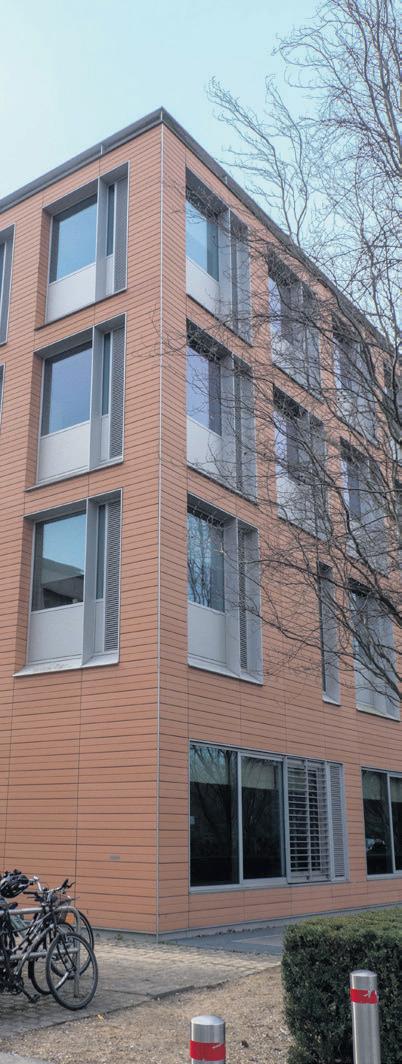
promising that Part IA showed a narrower gap” but expressed concern that the gender awarding gap “trend is not disappearing”.
She explained: “We recently had a lecture in which we were assured that being told to ‘write like a man’ was no longer an issue in Cambridge English. But the Part IB statistics speak a much more alarming story. With one fth of female-identifying students gaining a rst compared to a third of males, we really have to start asking what social forces are at play.”
“Why is the attainment gap so persistent? Is it a con dence issue - and if it is, how do we show female-identifying students that their thoughts are just as valuable, their writings just as compelling, as those of their peers?” she continued.
Professor Bhaskar Vira, Pro-ViceChancellor for Education and Environmental Sustainability, said: “ e University is investigating possible causes for the awarding gap in First Class degrees, including variation across subject and time. is is also being examined as part of our current teaching review.”
“Our ndings so far suggest that there is no single cause, and while there are examples of progress in some parts of the University, more remains to be done. We will make sure this research is visible and share the lessons we learn. is will contribute to action plans being set up to address the issue,” he continued.
9%
more female-identifying students achieved a II.ii than males in part IB
“the relation between the gender-awarding gap in last year’s part IB exams and the introduction of Inspera” should also be considered.
She explained: “One of the predicted bene ts of using Inspera that was discussed in open Faculty meetings last academic year was that typed scripts remove unconscious handwriting bias on the part of examiners, and so it was seen as something that could potentially help to lessen the gender-awarding gap.”
“ e fact that the gap did not improve means that Inspera was not working as it was hoped and predicted to, which I think would be worth discussing if the Faculty uses Inspera again in the future,” she continued.
e varying performances across individual papers at part IA was also present in part IB, with male-identifying students achieving “signi cantly higher marks than females on Papers 6 and, especially, 7A this year”.
of female and male Firsts being 18% and 14% respectively. e maximum mark attained by a female student for part IB was 80, in contrast to 82 for male students, both of which were achieved in Paper 5.
e report noted that in 2023, “the gender gap was quite stark at Part IA and less so at Part IB,” also noting that 2023’s Part IA cohort is 2024’s Part IB cohort. is smaller gender attainment gap in 2023’s Part IB cohort carried forward into their Part II results, with 47.37% of males achieving a First against 41.43% of females. Females were 9.55% more likely than males to achieve a II.i while, unlike in Part IB, males were more likely to be awarded a II.ii.
“I am currently in conversation with the University Gender Champion and some Members of Sta across the University who are actively working on identifying and bridging the Gender Awarding Gap. is is also one of the agenda items for the upcoming Gender Equality Steering Group (GESG) where Members will discuss all ongoing work across the Collegiate University on the Gender Awarding Gap,” she continued. 11%
ird-year English student Esther Forey-Miller, who served as the student representative last year, suggested that
For Paper 6, 34% of males gained a First in comparison to 12% of females, while Paper 7a saw a di erence of 30%. 45% of males attained a First whereas only 15% of females received the same grade.
Females did, however, outperform males in Paper 7b, with the percentage
Discussing the attainment gap, Students’ Union women’s o cer Nowsha Farah said: “It is deeply concerning that there is such a disparity in the grades being awarded to female-identifying and male-identifying Students in the English Faculty notably for Part IB English exams. ese gures highlight the importance of addressing this issue impacting Students.”






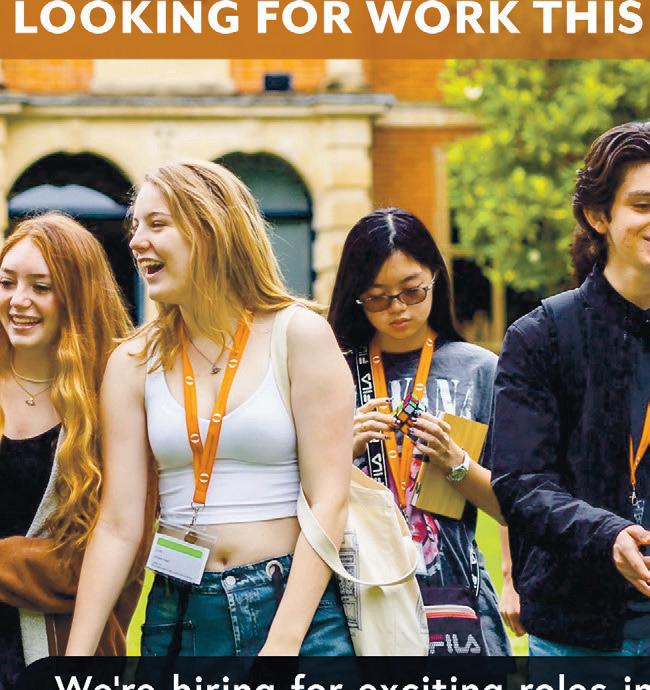









Anuk Weerawardana & Louisa Graves Senior News Editor & News Correspodent
e University of Cambridge has been named as one of 12 UK universities that has been involved in teaching security courses to students in countries where torture is widespread.
According to a report by Freedom from Torture (FFT), the University has provided programmes to police colleges in Hong Kong and India.
e University provided postgraduate education for Hong Kong Police College (HKPC), which was at the same time al-
legedly involved in teaching cooperation and exchange with the People’s Public Security University of China (PPSUC).
e PPSUC is responsible for training and supplying police for Xinjiang, where human rights violations including torture have allegedly been carried out on a scale amounting to crimes against humanity.
A series of police les obtained by the BBC in 2022 revealed details of China’s use of “re-education camps,” detaining what human rights groups believe to be more than one million Uyghurs against their will. e les described the routine
use of armed o cers and the existence of a shoot-to-kill policy if someone was to escape.
China has also been accused of persecuting Muslim religious gures and forbidding religious practices in the territory, in addition to destroying mosques and tombs.
Between 2017 and 2020, Cambridge, in partnership with HKPC, o ered a Master of Studies (MSt) in “Applied Criminology and Police Management (Police Executive Programme)”. e course was designed for senior leaders of the police force and was available to three successive cohorts of Hong Konger students.
Lecturers from the University ew to Hong Kong and students from Hong Kong attended lectures in Cambridge as part of the programme. e HKPC described the programme as designed to help develop “future leaders in the Force”.
e report alleges that Cambridge’s partnership with HKPC coincided with an increase in human rights violations in the region. During this time HKPC had direct contact with Xinjiang’s police force and Xinjiang Police College which was later sanctioned by the USA in 2019 for its role in “egregious human rights violations in the region”. e course is still being o ered by the University, although the contract with HKPC was terminated after China began its crackdown on free expression in Hong Kong.
In 2019, anti-government protests erupted in Hong Kong after an extradition bill was introduced that would have allowed for criminal suspects to be extradited to mainland China. Although the bill was withdrawn later that year, Hong Kong’s national security law was introduced in 2020. e law made illegal a wider range of government dissenting acts, including secession which is the breaking away from China, and subversion: undermining the authority of central government.
Police violence occurred during the Hong Kong protests with police o cers seen beating, pepper-spraying and teargassing people, including those already subdued on the ground. No members of the police force alleged to have used extreme force during the 2019 protests have been held accountable according to Human Rights Watch.
e Institute of Criminology at Cambridge University stated: “ e Institute of Criminology does not work with the Hong Kong Police. e Institute taught three cohorts of Hong Kong O cers from 2017 as part of a contract with Hong Kong Police.”
“As soon as the Chinese Government stepped in to restrict democratic freedoms we acted quickly and terminated the contract. Democratic values are a critical part of the Applied Criminology and Police Management programme,” they continued.
In 2021, then UK foreign secretary Dominic Raab outlined guidance to avoid the complicity of British organisations in human rights violations. e guidance stated that “businesses that directly or indirectly provide goods and services to authorities in Xinjiang […] are at risk of unintentionally facilitating or being otherwise complicit in human rights violations.” In light of this advice, FFT have said Cambridge’s relationship with HKPC “raises clear concerns”.
According to freedom of information requests received by FFT, Cambridge University did not conduct any checks on their partnerships with HKPC or PPSUC to spot and evaluate risks to human rights.
e University of Cambridge has also been criticised for its link with a police academy in India.
Cambridge Enterprise, a subsidiary of the University, has provided mid-career training for senior police o cials at India’s national Sardar Vallabhbhai Patel Police Academy.
e relationship began in 2010 when Cambridge’s Institute of Criminology signed a contract worth £2.4 million with India’s National Police Academy. e agreement involved Cambridge providing mid-career training for 420 police ofcers for a period of three years, but has extended to at least 2020 when the University agreed to a two-year programme to train 600 police chiefs in India.

Kezia Douglass News Correspondent
Selwyn College has defended keeping controversial comments under a Facebook post celebrating the start of LGBTQ+ history month on the grounds of freedom of speech.
Photos marking the start of Pride month were posted on Selwyn’s Facebook in February showing two JCR ofcers raising the Progress Pride Flag. e post then received a series of comments from Facebook users criticising the College’s ying of the ag.
One commenter wrote that they were “glad they are banning this ideology in the USA […] many children and adults were irreversibly harmed as part of transgender surgeries,” with another alleging that the College was “pandering to neo-Marxist authoritarianism. I would have hotly contested this in the JCR had I been a current undergraduate.”
A College spokesperson has defended the not restricting these comments, stating that “this is covered by freedom of speech, and decisions of the College can and should be subjected to scrutiny and challenge.”
Some commenters criticised those attacking the College’s post, with one
user stating that “these comments have proved why Pride is still so important.”
According to minutes taken at a JCR meeting on Sunday 02/02, Selwyn JCR was concerned about the “types of comments” under the Facebook post, agreeing that it would be a “good idea” to “make clear that this rhetoric is not supported by Selwyn”. However, members disagreed as to whether or not they should respond with a statement.



without legitimising or giving power to what is said.”
One ents o cer suggested that comments which “go beyond just opinion” and are not “engaging with discussions” could be deleted. e JCR has not put out a statement regarding the comments and comments appear not to have been deleted.


While the LGBTQ+ o cer said that the JCR has “a duty to protect the well being of students,” the vice-president said: “I am not sure a statement would be bene cial,” adding: “We don’t want to turn it into a ame war.” e president that the JCR should “ nd a way to acknowledge what has happened and provide welfare support







is comes after Cambridge University implemented a new free speech code last year, which aimed to allow individuals “to question and test received wisdom,” including expressing “controversial or unpopular opinions within the law, without fear of intolerance or discrimination”. e new rules were based on the government’s Freedom of Speech Act, which was later paused by education secretary Bridget Phillipson over concerns it could enable hate speech.


Cantab conductor apologises over ‘Ma a families’ comment

King’s College alum and Principal Conductor of the London Philharmonic Orchestra (LPO) Edward Gardner was reportedly threatened with defamation action by a leading Italian opera house for likening its singers to “rival Ma a families”.
e Teatro di San Carlo opera house in Naples criticised the conductor following a comment he made in an interview with e Times last month. Gardner, who recently made his debut at the opera house, claimed that the chorus of Teatro di San Carlo “is made up of two rival Maa families – who after one performance put each other in A&E.”
Gaetano Manfredi, the Mayor of Naples, described the allegations as “very serious” and “completely unfounded,” declaring: “We will act to protect the reputation of the San Carlo eatre and its employees.”
Gardner conducted the choirs of Trinity, Jesus, Selwyn, and Clare last Saturday (15/02) in a performance of Beethoven’s Missa Solemnis in Sa ron Hall. e performance was organised by the Cambridge Centre for Music Performance (CMP) prior to the publication of the comments he made to e Times
Angelo and Sergio Pisani, the lawyers representing the opera house, said: “ e defamatory statements attributed to Gardner undermine the prestige of a cultural institution of worldwide importance.” ey added: “Unfounded attacks such as these risk undermining the credibility of an institution that has made an important contribution to the dissemination of art and music for centuries.”
Gardner has since retracted his comments and apologised to the singers in a statement made on Tuesday (18/02). He stated that he was “more than happy to retract that allegation” and said that he had “deep respect and appreciation for the choir and its members”.
He explained: “Shortly before my arrival in Naples I was informed that two members of the chorus had a public ght outside the theatre resulting in one person being hospitalised. I was very surprised by this.”
“However, I did not intend to suggest that the choir were members of the Ma a,” he added
He also said working with the chorus was “a meaningful experience that highlighted the talent, dedication, and hard work of this group”.
All relevant parties were contacted for comment.
A spokesperson for Selwyn College said: “ e College ew the Progress Pride Flag. Some commenters criticised this on social media. is is covered by freedom of speech, and decisions of the College can and should be subjected to scrutiny and challenge. Others then joined the Facebook debate, vigorously challenging the critics – and that is also what free speech is all about.”
Here at Cambridge, the months easily blend into each other as we grapple with the intense weekly cycle of deadlines and supervisions. One of the only things that ever reminds me that January has tipped over into February is the bright rainbow out of the corner of my eye as I walk past the Mathematical Bridge, or glance up at my College’s front gate. e Progress Pride ag serves as a reassuringly colourful reminder on a dreary winter morning that there are active spaces, like those in colleges, which are carved out for the queer pride and acknowledgement of queer history.
Others are able to express their disagreement, as individuals have done under the Facebook post of Selwyn College’s JCR raising the Pride ag at the start of this month. Nevertheless, as the saying goes, freedom of speech is not freedom from consequences. O ensive and hilariously inaccurate
comments should be removed and condemned when they make members of these spaces uncomfortable and undermine commitment to the protection of LGBTQ+ individuals. Without responding, Selwyn has not done justice to the safe and celebratory space that it should be cultivating. I understand that they might not want to be seen to legitmise those comments and the particularly vitriolic attacks often present on social media. However, an o cial response would avoid stooping down to their level, while re-asserting their commitment to LGBTQ+ rights. Otherwise, ying the ag then becomes a super cial gesture, one that you can post to Facebook and forget about when serious issues arise, while displaying the ag on top of college buildings for all to see.
But anyway, what do I know, I’m just a “neo-Marxist authoritarian” forcing my “ideology” down your throats.
Elizabeth Bratton Deputy News Editor
e Modern and Medieval Languages and Linguistics (MMLL) Faculty has led a formal complaint to the University, as the Sidgwick Site lecture block lift has been out of order for nearly a month.
MMLL students were alerted by a Faculty email that the lift on the Sidgwick Site lecture block had failed and was unlikely to be xed by the end of the following week on Friday 24 January.
e lecture block has ve oors, with 20+ steps between oors.
Five days later, the MMLL faculty ofce informed students that the lift was still out of action.
In both emails, MMLL professional services said they were “fully aware” that the situation was unacceptable, o ering their “sincere apologies”. Students with accessibility needs were told to reach out to the faculty if they had any concerns about how the lift closure might a ect them.
Classes and lectures with attendees with accessibility needs have been relocated to accessible spaces in other buildings, such as the English Faculty building.
e MMLL faculty forwarded an update to students which it had received from the Education Space Team on 6 February.
e update read: “We have received an update that the lift in the Sidgwick Lecture Block is being replaced and will take about 2.5 weeks. Apologies for any inconvenience this may cause, if you require an alternative venue with stair free access for any of your cohorts, please do get in touch and we will assist wherever possible.”
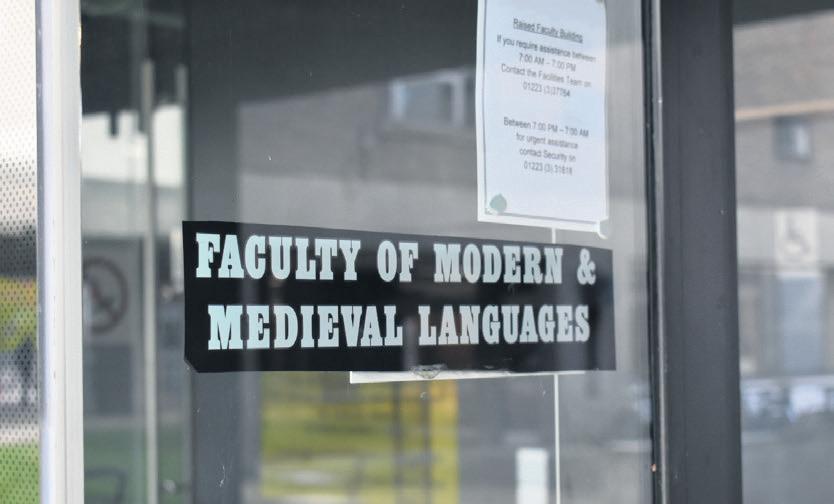
e MMLL Faculty explained that they understood this to mean that the lift should be repaired by the week commencing 24 February, though added that they would send a further update “to con rm this when we receive concrete evidence that the work is in progress”.
e email continued: “ is is a ecting students from every faculty on the Sidgwick Site.”
Sidgwick Site is home to various faculties, such as Music, English, Divinity, History, Law, Criminology, AMES, and Classics.
e MMLL faculty also revealed that it had made a formal complaint to the University, “to ask that [the lift] be repaired or replaced”.
One MMLL student with accessibility needs praised the MMLL Faculty for their response to the lift closure, saying they had been “very proactive in relocating all of my classes to accessible rooms”, adding: “ ey were in contact with me before the broken lift had the opportu-
nity to a ect my lectures.”
Another MMLL student, who has difculty with the lecture block stairs due to an ongoing health issue, told Varsity that they did not want to try to get the location of their lecture moved due to concerns that the Faculty might not be able to facilitate the change. Instead, they have dedicated 15 minutes to taking the stairs up to their lecture. ey added: “I think the MML[L] Faculty is trying their best.” e lift also broke down for a brief period in October 2024.
A University spokesperson said: “ e lift has an intermittent fault which the University’s Estates Division is working to resolve as quickly as possible. is has taken longer than we would like due to waiting time for parts. To ensure that those who need to use the lift can get around the building, lift engineers have been on site when required to swiftly resolve any issues should they occur.”
Lili Fairclough Deputy News Editor
he annual Pembroke Regatta was cut short last week (15/02) after poor weather conditions, race delays, and a rower falling into the river.
he day of races was scheduled to run from 8am to around 4:30 pm, but racing was called of at around 4pm, with teams from the W1 division and the men’s alumni division having their races cancelled.
he bad weather lasted throughout the day, with cold temperatures (lows of one and highs of six degrees), rain, and hail. here were long delays to many races, lasting over an hour, meaning that rowers were exposed to these conditions for extended periods of time.
One student told Varsity that: “he day itself was freezing, which wasn’t helped by the insane delays. We were sitting on the bankside for over an hour in the freezing cold with occasional bursts of rain and hail which made it even worse”.
A spokesperson for the Pembroke boat club noted “that being on the water for over an hour is fairly standard for regatta style races” Complaints over the wait were reiterated by another student, who added that they waited in “almost constant rain and hail for about an hour, if not more” and had their race “delayed by over half an hour”.
Some students speculated about the cause of the race delays, suggesting that “houseboats moving around the river”
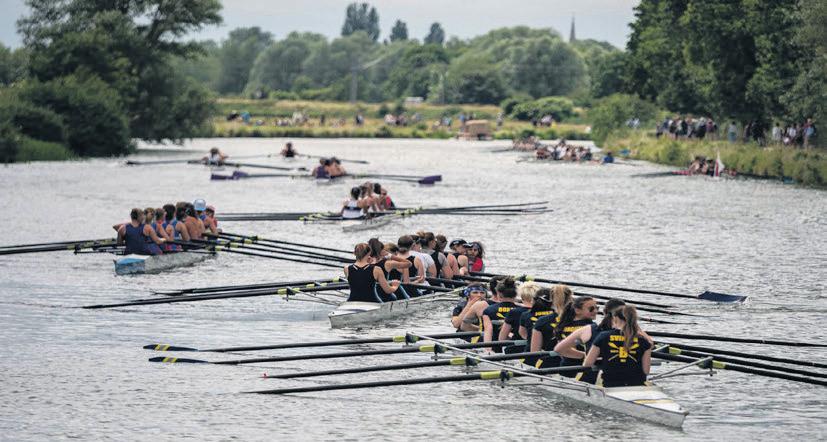
may have contributed, but added that they were not sure. hey stressed that “this is of course not the organisers’ fault.”
Another said that “we didn’t get any updates as to why these delays had happened.”
At one point, a rower fell into the river. One student described the decision to cancel the rest of the races after this incident as a “prompt and sensible decision”. he boat club spokesperson stated: "We have been in touch with the coach of the rower concerned since Saturday and understand she continues to recover.” he organisation of the race as a whole – run by the Pembroke College Boat Club – was criticised by some rowers, who said that “the event itself could have done with much more communication surrounding the delays and how long we would be waiting for, and was ineicient
in setting of boats, making the delays grow further.”
his comes after the 2022 Pembroke Regatta also ended early due to poor conditions, with two students contracting hypothermia as a result.
However, the conduct of the race marshals was praised by many students, who said that they were “so lovely and cheerful and should not be subjected to the criticism they are receiving”. Another student added that they were “very friendly and communicative”.
A spokesperson for the boat club explained: “We have begun, as a college, the process of compiling a full report of the 2025 regatta to ensure we continue to improve the experience for all [...] We would encourage anyone with constructive comments on ways the event could be improved for future years to get in touch with us.”

Charlie Rowan & Jasmine Heddle-Bacon Deputy News Editor & News Correspondent
Trinity Hall has closed its dining hall after part of the ceiling collapsed, leading to the cancellation of formal halls and the relocation of halfway hall.
Students were informed by the College’s Junior Bursar on 18/02 that “a section of cornice between two beams has fallen,” meaning that events planned in the hall will “be located elsewhere or cancelled” until “further notice”.
Fiona Simon, the College’s Head of Catering, stated: “We will need to cancel Formal Hall on hursday and most likely Sunday’s Formal Hall too.”
Following this, there were concerns over halfway hall's cancellation, due to take place today.
he College’s JCR Presidents stated: “Us and the Freps [Freshers Representative] will make sure there is deinitely something on Friday, even if it is not what was originally planned.”
Varsity understands that halfway hall will still take place but in two separate places: the Leslie Stephen room and the Graham Storie Room. he College assured students that “no one was injured, although a staf member was in the vicinity at the time.” A structural review is now underway to assess the safety of the re-
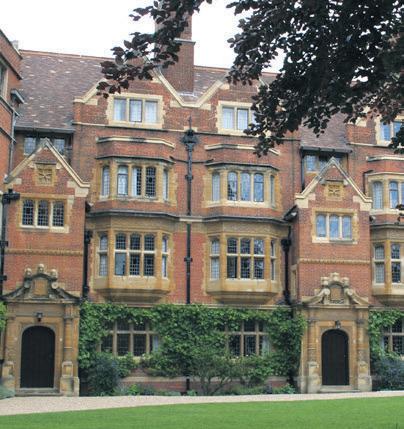
maining cornices in the hall.
One student said: “here appeared to be a signiicant amount of damage to the ceiling with lots of rubble on the dining table”. hey added: “We’re very glad halfway hall is going ahead.”
Another student said that “eating in hall is an integral part of the Tit Hall community experience” which reduces feelings of isolation, particularly when “there are no other communal dining areas for those living on the main site.”
Last February, Trinity College closed its dining hall for a month and suspended formal events, including halfway hall after its roof plaster fell, forcing a shutdown for safety.
A spokesperson for Trinity Hall said: “he College is keeping its community closely informed as to the duration of the withdrawal from use and the timing of repairs.”



Mini duck gures have appeared around Churchill College. ey have been found across the College this past week, sitting on windowsills and in bathrooms. It’s not clear where they’re coming from, but these mystery ducks are de nitely brightening up the Week Four blues!
Varsity understands the ducks had previously been displayed around College grounds, including outside the entrance to the Churchill bike sheds and the main entrance. e Churchill College Instagram posted about the ducks earlier this week (16/02).
Following a totally uneventful trip to a local curry restaurant, the Cambridge University Hockey Club were reminded about how to feed themselves correctly. In an email sent to all Club members marked “important,” attendees of social swaps were reminded that food should “travel safely from plate to mouths with no detours”. e Club’s president also noted how she believed this advice “did not need to be said,” but noted that it felt necessary “on the back of newspaper articles”.
Cambridge University Labour Society has recently announced Andy Burnham, Mayor of Greater Manchester as its new Honorary President. Burnham served in Gordon Brown’s cabinet as chief secretary to the treasury, culture secretary and health secretary. He is a member of Labour Co-op and identi es as a socialist. Burham also graduated with a degree in English from the University of Cambridge where he was an undergraduate at Fitzwilliam College.
Conservation charity partners with King’s
Conservation charity Cambridge Past, Present & Future (CPPF) has agreed to a partnership with King’s College to “deliver a brighter future for Grantchester Meadows”. e partnership will allow the meadows to be “better maintained and improved for the bene t of nature, the environment and people”. CPPF will be responsible for the day-to-day management of the meadows and the Grantchester Tea Garden, which was gifted to the charity by the former owner after his death.
SIMPLY PRESENT YOUR CARD IN STORE

Return of ‘Twilight at the Museums’
From Monday 17 to Sunday 23 February, the University of Cambridge Museums are hosting their annual ‘Twilight at the Museums’ event series. is o ers after-hours access to the museums and galleries throughout Cambridge, ranging from an aquatic adventure at the Museum of Classical Archaeology to a nocturnal orchid hunt at the Botanic Gardens. David Cahill Roots, Head of Collections’ Programmes and Collaborations at the University of Cambridge said: “Families will be able to experience the magic and excitement of exploring their local museums as the night falls.”
Residents concerned about potential public toilets cuts
Cambridge City Council is facing a budget gap of £11.5 million over the next ve years. In response, the Council revealed budget cuts on 10 February. Among those is a proposal to scrap three public toilets, which could save the Council £121,000 every year. e toilets are situated in Victoria Avenue, Gonville Place, and Quayside. Cambridge resident Oscar Townsend told Cambridgeshire Live: “[ e council] got rid of the bins and you can already see the impact of rubbish and trash being around the place – if you were to get rid of toilets what do people do then? [...] It’s not really a good look for tourism and people out that are residents if you’ve got rubbish and human waste in the place.”
Former sweet shop could become Scottish knitwear store
Sweet shop Wilfreds of Cambridge closed its doors for the nal time last year, following ten years of business on King’s Parade. Now, the former sweet shop could be converted into a Scottish knitwear store. According to Cambridgeshire Live, knitwear brand Kiltane has submitted an application to Cambridge City Council, asking for permission to carry out refurbishment works. According to the plans, “heritage materials” including brass and “heritage tones of paint and nishes” would be used. e brand says it is aiming to “restore, retain and celebrate the original shop details,” stating that it would “train local shop sta to help create a unique shopping experience”.
Nick James Investigations Lead
Varsity has investigated Cambridge’s growing ambitions to increase the commercialisation of research as the government draws up plans to “unleash the potential of the Oxford-Cambridge Growth Corridor”.
Schemes such as Cambridge Enterprise and the development of the West Cambridge campus have encouraged a greater commercialisation of research, leading Cambridge to produce more valuable spinouts than any other European university, according to Dealroom.
Cambridge Enterprise is a subsidiary of the University, designed to “[help] innovators, experts and entrepreneurs use commercial avenues to develop their ideas and expertise for the bene t of society, the economy, themselves, and the University,” as described by their website.
£43 million
e amount Cambridge invested in startup companies
Over 150
Companies that Cambridge Enterprise has invested in
is is done through helping researchers identify Intellectual Property (IP), patent IP, invest in IP through their various funds and connect researchers to the broader University and commercial networks. Most of the research Cambridge Enterprise helps commercialise is in science and technology.
So far, Cambridge Enterprise has invested £43 million in over 150 companies, including Gyroscope, BlueGnome, VocalIQ, Solexa, and Colori x.
A spokesperson for Colori x, which has developed a biological process to replace the use of harmful chemicals used in dyes, told Varsity: “Cambridge Enterprise has been an extremely supportive investor for Colori x, participating in all rounds from Seed to Series B.”
Dr Diarmuid O’Brien, Pro-Vice-Chancellor of Innovation and ex-CEO of Cambridge Enterprise, told Varsity that commercialisation plays an important role in large-scale science and technology projects because, “You can’t do that kind of research at that scale within a university environment.”
Cambridge Enterprise also takes lower equity stakes in its investments of Cambridge spinouts, as “the primary goal is really about how do we make sure that the incredible ideas and research that’s happening within the University have a chance to bridge out to make that social impact for society.”
“Unlike other institutions, Cambridge does not try to maximise its monetary return […] In fact, it’s almost the op-
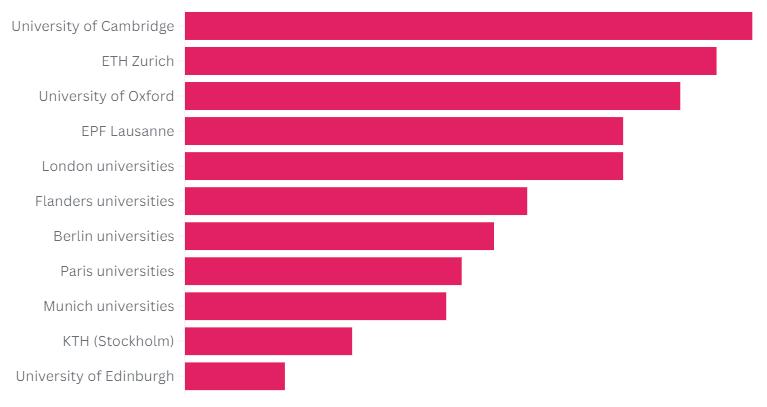
posite: our goal is to try and support as many new companies [to] get formed as possible, and to help them raise the capital they need to be successful,” O’Brien continued.
However, O’Brien told Varsity there are also ambitions to go further. Speaking about the commercialisation of research on a national level, he said: “We are often too comfortable in our approach and so we don’t see a lot of companies fail. And, actually, we should be seeing more fail because if people are being ambitious in what they’re trying to do then […] some things just won’t work.”
Part of the plan to realise Cambridge’s ambitions revolves around the expansion of the West Cambridge campus: a 66-hectare site focused on science and technology and designed to incorporate the private sector.
e campus is already home to the recently completed Ray Dolby Centre, the largest and most expensive natural science building project completed by a leading university in recent years. e £50 million New Whittle Lab is also due to open on the campus shortly.
Other plans for West Cambridge include “Growth Hubs” and an “Innovation Space” to support start-ups and spinouts.
O’Brien described the campus as an “incredible opportunity” to have “globally leading companies in climate, tech, quantum, and AI, all co-located on that campus beside our research facilities.”
He added: “We can really then collectively partner on how we can use those technologies to impact some of the great problems of the world.”
Cambridge’s growing ambitions coincide with the government drawing up plans to link Oxford and Cambridge with the hope it will add £78 billion to the British economy.
Daniel Zeichner, the MP for Cambridge, told Varsity that: “ e government sees Cambridge as an important driver of the UK’s economic growth, innovation and global competitiveness […] e gov-
ernment is backing Cambridge’s growth with targeted investment, including £10m for housing and Environment Agency approval for 4,500 new homes.”
e Chancellor of the Exchequer, Rachel Reeves, said in a recent speech that the Oxford-Cambridge arc would create “Europe’s Silicon Valley,” but O’Brien is hesitant to make such a comparison.
£78 billion
Will be generated by the OxfordCambridge arc, according to the treasury
“Although [Silicon Valley] have built an incredible technological environment, they have created a large social disenfranchised environment too,” which O’Brien argues has led to the “decay of a really great city”.
“It’s really important that development happens in a way that is inclusive and that it actually builds new communities, not just new houses,” he continued.
Instead, O’Brien is keen to replicate the kind of success seen in Cambridge, Massachusetts, which has access to high levels of venture capital funding, a high density of talent and a supportive entrepreneurial culture.
In response to the increase of commercialisation of research at Cambridge, some academics are worried that it may lead to less focus on forms of research that are not commercially viable, in both the humanities and the sciences.
Professor John Marenbon, a philosopher and Fellow of Trinity College, told Varsity that “there’s a great danger” in “the latest attempts to think of Cambridge as a place which is going to be central to ideas of making the British economy grow.”
He added: “One shouldn’t think of it as just a worry for humanities […] in the sciences the worry could be that the very nature of research could be changed to research which is aimed at short-term bene ts and short-term outcomes.”
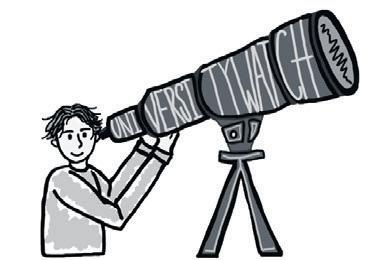
Edinburgh considers school closures amid nancial strain
◀ PROPORTIONAL SPINOUT VALUE CREATED BY EUROPEAN UNIVERSITIES
But O’Brien is con dent that this will not be the case: “I’d be really disappointed if we didn’t nd a way to balance that focus. I mean Cambridge is an institution that values and has excellence in research right across all of its schools and I think that has to be the vision for the future.”
“It’s also a real mistake to think that the research that takes place there and the training of our graduates that takes place in our humanities and social sciences, doesn’t connect to this agenda; there’s lots of people who are needed in the economy of the future which are not technical people,” he continued.
Lord Martin Rees, the ex-master of Trinity, told Varsity that he is not concerned about the increase in commercialisation of research at Cambridge, but does worry that “most of the long-term bene t [of commercial research] has not gone to this country because of [an] early sellout.”
He is also concerned that “academia [is] becoming less attractive as a profession because of nancial squeezes.”
“Life as a young academic is getting more precarious,” Rees argues, which is deterring talented students from pursuing research. He believes that “the University is in a position to bang on and have some in uence” over national policy to change this.
In response, a spokesperson for the University said: “Cambridge has a proud history of excellence right across academic disciplines. Our people produce research that furthers knowledge and improves lives all over the world. Emphasising the University’s role as an engine for growth does not mean other aspects of research impact are not important.”
“Talented people are our greatest asset, and we are talking to the Government about ways to increase funding for early career researchers. e Trinity Cambridge Research Studentships were recently launched, with the goal of achieving £50m of funding for new PhD students,” they continued.
Edinburgh University may undergo restructuring, school closures, or outsourcing to address nancial challenges, according to Principal Sir Peter Mathieson. In an email to sta , he extended voluntary redundancy o ers, warned of urgent costcutting measures, and declared that “no money-saving measure is o the table”. Rising operational costs, government funding shortfalls, and declining student satisfaction have reportedly worsened the situation. Last August, the principal warned running costs had increased to £100 million a month, an increase of £10 million each month compared with 2020.
LSE tops UK University ranking e London School of Economics (LSE) has claimed the top spot in e Times and Sunday Times Good University Guide 2025, surpassing Oxford and Cambridge for the rst time. Oxford and Cambridge dropped to third and fourth place, their lowest ever rankings. LSE’s rise is attributed to strong graduate employment rates, improved student satisfaction, and high teaching quality. e University excels at placing graduates in top jobs, with 92.5% in skilled employment or further study within 15 months.
Exeter Society investigated for racism
e University of Exeter’s Students’ Guild has investigated the University’s Freedom Society following claims of Islamophobia. A recording from an October 2024 event, 'Two Tier Policing: Injustice Unveiled,' captured a speaker making in ammatory remarks about immigration and race, describing it as the “ethnic displacement” of White English people. e Guild’s investigation found that while the speaker was no longer a student, some event guidelines were not followed, and parts of the speech breached its Code of Conduct. As a result, the Freedom Society’s committee underwent training, and its pints and policy events were brie y suspended. e Freedom Society, which describes itself as the “place for intellectually curious right-wing students” denied endorsing Islamophobia, stating it revised its policies to ensure open and respectful debate.
‘It’s
Mariam Al-Badry talks to Diane Abbott about racism, electoral reform, and the rise of the far-right
As I prepared for my Zoom interview with Diane Abbott, I wasn’t sure what to expect. She is a trailblazer in many ways: the first Black woman to be elected to the House of Commons, and the ‘Mother of the House,’ as the longest continuously serving female MP. When she popped up on my screen, with her immaculate bangs and glasses peering out at me, I was surprised by how humble she was. She greeted me warmly, asking me about myself and my studies.


current Labour party is tense. e Party has shifted in policy towards the centreright, while she has always been on the left of the Party. She was removed from the shadow cabinet by Keir Starmer and following the controversy over her letter written to e Observer, she later had the whip withdrawn under his leadership. She has previously accused Starmer of trying to force the left out of the Party. It is surprising, then, that in her memoir she claims she will “always belong to the Labour party at heart”. I asked her about this, and whether she could still recommend the Labour Party to leftwing activists. She responded that
❝













ing that in the US, “Trump must be the most racist American president since the civil rights era.” So, in the international context, there is “a tide of racism and anti-immigrant feeling, and to a certain extent, Britain hasn’t escaped that.”








College and subject?
Ben is at Christ’s, and Ophelia at Clare, and both study HSPS. Together, they chair CULC.
What has the reaction been from CULC members to Labour’s rst seven months in power? Media reception has been mixed to say the least – so are you pleased with how it’s going, or disappointed?
















ry. When Abbott started her degree, only 16% of undergraduates were female and only six colleges admitted women. She was also the only Black person in the History Faculty at the time. I wondered if the University, aware of this disparity, o ered any kind of support to Abbott or attempted to redress these imbalances. “No,” she told me honestly. “To University, it was almost as new to them to have a Black student as it was for me there.” She adds that universities back then, and especially Cambridge, were “sink or swim” places with “no nocare”. She recounted one instance in which she attended a May ball, and one of the students there assumed that she had come to work in the kitchen. is was just one instance in which she was made to during her time at Abbott’s rela-



To begin, I was particularly interested in her experience at Cambridge. Abbott matriculated in 1973 at Newnham, studying Histobe fair to the to be tions of pastoral tionship with the








The most important way is to get involved is through grassroots organisations





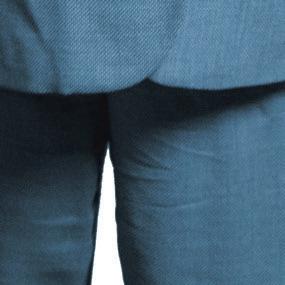



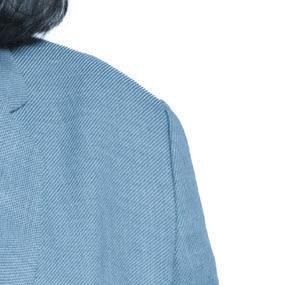
was “much more involved in the community,” including the Black women’s movement and issues of racialised policing, before becoming involved with the Labour Party. is advocacy then led her to her involvement with the Party, adding that, under rst past the post, if the left vote is split, the Tories will bene t. “If it was proportional representation, it might be di erent – there would be space for new left-wing parties […] but at the current time, you should join the Labour Party, even if it’s not the main thrust of your politics.”













Pressing further, I asked her what she thought about allegations of structural racism within the Labour party. She responded that “society as a whole is structurally racist.” While the Labour Party, as a progressive party, makes a conscious point of not being racist, “things happen, and you realise that racism is still there.” She later added that “the Labour Party currently is so frightened of Reform, it’s saying things that you wouldn’t want a socialist party to say.”







Not entirely convinced by the idea that diversity equates to political progress, I brought up the fact that the highest ranks of the Conservative Party are diverse, yet their policies remain oriented towards an anti-immigration stance. She responds, “I don’t think that having Rishi Sunak or Kemi Badenock makes the Tory party less racist. It is progress of a kind that you now see people of colour inside these organisations. However, I don’t underestimate how complicated that is. Sometimes, in order to climb up the ladder in a rm, people of colour have to be more racist than the white people […] they can give you more problems as a younger person coming in than a white person will.”
She thinks that now she would advocate for electoral reform, although she never used to. is is largely because of the experience of Jeremy Corbyn’s leadership. “One of the things you don’t hear is that Jeremy in 2017 got more votes than Keir Starmer, and in 2019 he got more or less the same. But I think people just couldn’t tolerate the idea of someone with that type of politics possibly being prime minister.” Adding that, “it’s because it’s the closest the left has ever gotten to having a left-wing prime minister, that it ended so horribly.” Because of this experience, she now thinks that “maybe proportional representation is the way forward.”
ere have certainly been strengths and weaknesses. Overall, I’d say it’s great to have got the Tories out of government, with the most working-class cabinet in British history. While it would be wrong for me to say I agree with everything, making di cult decisions is part of governance.
On a related note, a lot of left-wing activism at Cambridge is now happening outside of the traditional political societies, for example, the Cambridge for Palestine campaign. Given this, what is the role of a group like CULC in the University’s progressive movement?
I would like to say that CULC plays a key role in the University movement in a variety of ways. As the largest student society, we take pride in being an open space for discussion and political education – from pints and policy to workshops and speakers’ events. Additionally, we utilise our standing as an o cial society to run a host of fundraisers, donating large amounts to international and local charities. Last term (as a women’s o cer), I ran a quiz that raised over £100 for Palestine, and this term, we are working closely with the Cambridge City Foodbank and Jimmy’s (a local homelessness charity). Our focus is on making as tangible an impact as possible, promoting and actively supporting progressive politics.

Interestingly, Abbott doesn’t think that “Parliament is the best way to get involved in politics,” arguing that, “the most important way is to get involved is through grassroots organisations” on the local level. Nevertheless, we shouldn’t rule Parliament out altogether.




Moving on from this, Abbott talks about racism in the UK today. “In some ways we’re less racist,” noting that “Black children and white children going to school together” means more interracial familiarity than there was 50 years ago. Now, she notes, there are people of colour at the top of big law rms and running businesses, which you certainly wouldn’t have seen years ago. However, her view is that “given what a diverse society Britain is, there hasn’t been as much change as there should have been. And there is a danger, if we’re not careful, that we’re going to go backwards.” She points to the rise of far-right “fascist parties” across Europe, including in France, Germany, and Italy, add-

❝ Trump must be the most racist American president since the civil rights era
Abbott retains a sense of optimism that we don’t hear much of anymore. When I expressed that, for a lot of young people, the world feels quite hopeless at the moment, she immediately jumped to reassure me. Smiling, she exclaimed that “it’s not hopeless at all! Politics is cyclical, and we’re at the bottom of the cycle right now. But I’m con dent that in a few years, in terms of progressive politics, we’ll be on the rise.”
What’s one misconception people have about student politics that you’d like to debunk?
One myth I think needs debunking is that you need extensive political knowledge and background to engage with student politics. I can attest to the fact I do not know the names of all the Labour politicians throughout history, and student politics, on the whole, is very welcoming to students with all levels of knowledge and interest. It’s a great space to learn more, challenge your views and have loads of fun! For anyone thinking of attending a student political society, I could not recommend it enough. I attended pints and policy on a whim in my rst year and, just over a year on, I earned the great privilege of running the society, the possibilities of student politics are truly endless.
– ETHAN CAIN
If the area of the outside square is 100cm², what is the area of the inside square?
What percentage of respondents successfully solved this?




‘Keeping term’ is a prospect pretty unique to Cambridge and its short, intense eight-week terms. e University mostly demands that all students live in Cambridge for the duration of these terms, rather than living elsewhere or commuting. Cambridge University’s website states that “keeping term” is necessary if a student is to be eligible for their degree, and this consists of students spending “at least three terms resident in Cambridge” “For a term to be ‘kept’ a student has to reside in Cambridge for at least 59 nights in Michaelmas and Lent terms and 52 in Easter term” and must live within “10 miles of the centre of Cambridge while carrying out research in the University”.
As a fresher, moving out every eight weeks made it seem like there was hardly enough time. e terms ew by and before long I was back at home for just as long as I’d been away. Not to mention the lack of ability to stay in accommodation over the breaks or the need to completely move out each term. Well, it hardly felt like enough, and yet, simultaneously, eight to nine straight weeks in the Cambridge bubble felt like too much.
We are all busy at this University, and it sometimes feels as though ‘keeping term’ is not a choice, but rather, a necessity. However, spending at least a few nights outside of Cambridge each term does so much good. As a student that lives further away, this hasn’t always been the easiest thing for me to achieve, so sometimes it is relegated to day-trips. Anything to simply leave the academic




❝ We all need a break sometimes, a chance to escape the labs, seminar rooms, and cobblestones
world behind for at least a little while and breathe.
While I don’t quite believe in ‘keeping term,’ I am a big fan of ‘keeping (either side) of term’. Returning to Cambridge a week or so early each term, and staying a week or so after the end of term has been immensely helpful to me. Last year, when I followed the short rent contract of my college accommodation, it would leave me having supervisions on a Friday and then packing up all of my things and leaving the very next day. I also got little time to prepare for the term upon my return, spending months at a time away. ese feelings only reinforce that Cambridge is too rigorous. Adding a few weeks on to the beginning and end of my
term each time helps me to not feel this whiplash. I have time to prepare for, and decompress from, a hectic term without the pressures of deadlines.
Many of us stay in Cambridge through the holidays, but it’s not exactly as common of a practice as at many other universities. Spending time at home is always nice but spending just as much time there as I do in Cambridge unfortunately only makes Cambridge feel more an extension of boarding school than it ought to. I also have no work ethic at all when I’m at home and want nothing less than to write an essay.
Outside of term, Cambridge feels a little emptier; my house here certainly does. But there is still so much going on.
If you have the means to, and your rent contract allows it, it can be quite bene cial. e long holidays at home leave me missing a lot. Not to mention that spending the entire holiday at home can be worse for some than others. Home isn’t necessarily the best for everyone and the assumption that everyone has a happy family dynamic to return to is incorrect.
‘Keeping term’ is overrated. We all need a break sometimes, a chance to escape the labs, seminar rooms, and cobblestones. But ‘keeping (either side) of term’ is slightly underrated. It’s a little switch that has made my time in Cambridge more ful lling, and less overwhelming.
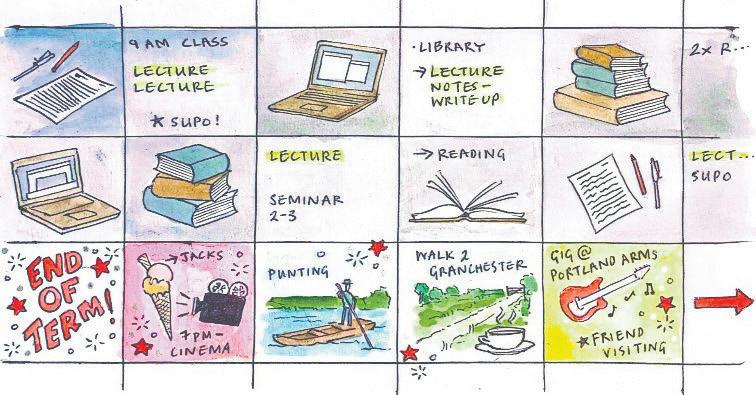
When I applied to Cambridge, I didn’t really understand the college system. I had been told on an open day that colleges were akin to Hogwarts houses, and that my university experience would be more or less the same regardless of which one I applied to. As I navigated my rst year at Lucy Cav, I quickly realised that this was not the case; it ba ed me that my college could be in so much debt to another – John’s – when they were part of the same University.
At the same time, like most rst year HSPS-ers, I was taking POL2, an introductory international relations (IR) paper. Central to the study of IR is the concept of international anarchy: the idea that there is no world government. Individual states are sovereign actors, meaning that only they are in charge of what goes on within their borders. ough there are bodies like the UN that are involved in global governance, state adherence to their regulations is largely self-motivated. e more I learnt about international relations, the more uncanny the similarities between sovereign states and colleges with few limits on their behaviour became.
ough we talk about the “University,” Cambridge’s colleges are generally autonomous actors. Just like states in charge of their own economies, citizenship, and political systems, each college is free to manage its own endowment, admissions policies, and leadership. Like states in a globalised world, colleges are also, in some instances, interdependent. It might be dramatic to compare my trek from Lucy Cav to Pembroke for a supervision to ows of migration between states, but it is fair to say that colleges often rely on each other to function. is is especially true of Cambridge’s poorer colleges. is year, I have no supervisions at my own college, something that would be much rarer at a more wellendowed college. Trinity is one of our largest benefactors, and last year I lived in accommodation that displayed a “St John’s College only” sign. Lucy Cav could do comparatively little to resist John’s’ decision to knock down three historic houses used by the College for over two decades and replace them with John’s accommodation. ough colleges, like nation states, possess autonomy, they are also constrained by allegiances (and indebtedness) to wealthier actors. e college system brings with it a
speci c set of challenges, as does its international counterpart. Because of this, it is often di cult to get states to cooperate with one another, and when they do, it is even harder to ensure that they enforce their pledges. e Paris Agreement, for instance, was rati ed by all but three states, but few have actually achieved their goals. is has unfortunate parallels with the University’s climate pledges; it aims to reach “absolute net zero” by 2048, but this only applies to the Universities “operational estate,” not the individual colleges. Just a glance at the Climate League of Oxford and Cambridge (CLOC) reveals just how wide the intercollegiate disparities are when it comes to climate action: Jesus has pledged to reach net zero by 2030, while several other colleges have no publicly available target.
It is not just states that are engaged in climate action, however. Increasingly, international relations has broadened its eld of study to focus on non-state actors like non-governmental organisations (NGOs), and theorised how they engage in global governance. A crucial part of their role is the provision of information, both through research and raising public awareness of issues. ey also
❝
Like states in a globalised world, colleges are also, in some instances, interdependent
put pressure on governments to change their policies, which often involves collaborating with national campaigns. is is a role that is played by student societies at Cambridge. For instance, if it were not for pressure from Trinity’s Student’s Union, it would not be public knowledge that the college had not divested from Israeli arms. Many students express frustrations with the lack of sustainabilityrelated modules within their courses, so the Cambridge Climate Society’s education campaign works with departments to change this.
Examples aside, I am not just trying to conveniently use my degree reading for something other than my essays. Cambridge recently ranked 110th out of 149 universities in a climate league table compiled by People and Planet. is should come as no surprise; my own engagement with student changemaking through the Climate Society has been at times frustrating, precisely because of how opaque and impenetrable the University’s governance system is. e college system is in many ways a fun quirk of the Oxbridge system, but understanding its systemic challenges is one step towards overcoming them.




The average relationship between the student and the college bedder is a strange one. On paper, it isn’t one which has much potential for a fertile and blossoming kinship. As a student, typical interactions with your housekeeper are punctuated with self-consciousness about the state of your room, occasional misunderstandings, very few words in exchange for lots of knocking, and an all-pervasive awkwardness. e housekeeper is a frequent feature in many embarrassing anecdotes, the person catching you coming out of the shower, with a partner, or with your room ruined post-pres. Alternatively, to many students it can feel like they don’t see much of them at all. e college bedder darts in and out of our rooms unseen and unheard, a mystical entity akin to the tooth fairy, leaving a sparkling bathroom or a neatly arranged kitchen behind.




is uncertain landscape between student and housekeeper is ironic. On one hand, the college bedder is able to enter the sanctuaries of our rooms, and is obliged to report anything which they deem concerning for our welfare, and on the other, they often remain absolute strangers to us. is strange cognitive dissonance makes it all too appealing to go the other route, to unconsciously make them and the work they do invisible. is only tips us further into ancient classisms, where vast numbers of students who have never known a minimum wage job fail to recognise the hard work which goes into their simple daily comforts.
I’ve recently been re ecting on my
❝ e college bedder darts in and out of our rooms unseen and unheard
own complicated relationship with college housekeepers because to me, it feels like these (predominantly) women only become more and more visible. I have also, many a time, su ered from the crawling, uncomfortable feeling I would have when the housekeepers would enter my room, and I would be sat back doing work on my laptop. But, occasionally, this unease would be mixed with delight at hearing Polish conversation between the women as they worked, and my excitement at being able to have a short conversation, exchange a few words, in response. Being able to hear these women chat, gossip, and greet each other around the college in a language which feels several levels more personal to both myself and them, provides a level of support to me which
goes much further beyond than just a clean bin. Being Polish and from a working class background, Cambridge often severs these ties to what reminds me of home, and these simple, oddly-placed reminders of it have become incredibly meaningful.
Upon re ection, my own relationships with the housekeepers at my college are inde nitely complicated by the fact they seem to be too close to home. While some of my peers don’t seem to have this personal, unsettled feeling when interacting with housekeepers, I can’t look past it in the same way. It’s more than just awkwardness when I’m able to talk to someone past the language barrier, when their lives and experiences could be any one of my own relatives that moved here to this country. In short,

I see the lives of my own mother and aunt in the work that they do. I take these interactions with housekeepers more personally because my background is uniquely placed to be able to do so. What these re ections have highlighted to me is how many students fail to achieve this type of insight into the vast numbers of people that work around us on a daily basis. We can do more to recognise the reality that every person we see is a person with their own unique experiences, wisdom, and perspective. It’s not just the housekeepers, it’s also the maintenance sta that come to descale the shower, the bar sta that make your co ee, the porters, the gardeners, and the people that serve you dinner at hall. In particular, the cleaner, who carries a systemic stigma with the job’s ties to low income work and its subsequent ‘feminisation,’ makes the people in the profession particularly vulnerable to a normalised neglect. My message here to everyone: make friends with your housekeeper. Simple conversations foster relationships of respect, kindness, and humanity. Learn your housekeeper’s names, ask them how their day is going, make small talk when you’re waiting for your bagel to toast. Leave a note saying thank you at the end of term, maybe some chocolate if the state of the kitchen is particularly dire. ese small tokens of gratitude combat the powers which dehumanise such important work, as well as saving you from lingering in that awkwardness and discomfort which too often gets in the way between the student and the college housekeeper.
e University must get to grips with gender attainment gaps
AtCambridge,thegenderattainment gap is far from theoretical. In the 2023/24 academic year, 24.2% of women earned a First, while 33.4% of men did. However, the latest examiners’ report from the English Faculty throws a curveball into the usual conversation about the gender attainment gap. On the surface, the numbers tell a mixed story: in the



2024 Part IB exams, men pulled ahead, with 32% achieving a First compared to 21% of women.

But in Part IA, the results ipped, with women outperforming men – 22% of them securing
But, a step back from the stats reveals a familiar pattern: as students progress through their degrees, men continue to dominate at the very highest academic level. Women, meanwhile, consistently perform well but are more likely to receive a 2.i.While their work is strong, they are awarded top marks less frequently. These fluctuations aren’t just quirks of the data. When women consist- ently perform well
see this drop-o when it comes to nal exams?
Women consistently outperform men at GCSEs, and at A-levels, the di erence in the number of A*s between genders is minimal. Yet when we arrive at Cambridge, there’s something di erent in the air. It’s a bit like walking into a room, knowing you’re just as capable as everyone else, but somehow still feeling a little

up until university, why do we
out of place. It’s not a conscious barrier, but a subtle, pervasive environment that chips away at con dence. ese ofteninvisible biases consistently affect women’s sense of belonging and ability to






It becomes clearer day-to-day of academic life. Supervisions at Cambridge are meant to provide intellectual growth and challenge, but they can often leave you feeling smaller than when you entered.





❝ ese ofteninvisible biases consistently a ect women’s sense of belonging and ability to excel
talking about a slight shift in mood, here. I’m talking about a real drop in condence that comes from a combination of things. Maybe it’s the tone, maybe it’s the structure, maybe it’s the unspoken dynamic between the supervisor and the student. But it’s hard not to notice that, in some supervisions, I leave and nd myself somehow less assured of my own abilities than when I arrived.
And I’m not the only one. I’ve spoken to plenty of women who’ve had similar experiences. ere’s something in the environment at Cambridge that makes retaining your con dence harder. Maybe it’s the centuries-old academic tradition, or the subtle structures that allow certain voices and ideas to dominate. When I compare my time at Girton College to the wider University experience, the di erence becomes even more striking. Girton, with its female-centric history and leadership, feels like a breath of fresh air. e portraits of women in its walls and the College’s leadership structure directly challenge the assumption that men should dominate academic and leadership spaces. Yet, stepping out of Girton into the wider Cambridge world, the context that it was built for men becomes more apparent. Self-doubt you may have never experienced before starts creeping in.
I’m not out a







at doubt contributes to the “leaky pipeline” – a term used to describe the underrepresentation of women in the upper echelons of academia, with fewer women in research positions or senior academic roles. At Cambridge, just 29.9% of researchers were female in 2023,
even though women make up 47.7% of the undergraduate student body. English Literature provides an interesting example. e fact that women are more likely to achieve a II.i further reinforces this idea. While they consistently perform well, they are less often awarded the very top distinctions that can be critical for further academic progression. Fewer women are visible in authoritative positions interacting with students, so fewer women attain First class degrees and fewer women survive the “leaky pipeline,” a vicious cycle.
The 2024 report underscores the need for a deeper institutional reckoning with these issues. While the gures may not always follow a linear pattern, the overarching trend remains clear: at higher levels of academia, women remain less likely to achieve top results. Cambridge must critically examine the factors at play, from the way supervisions are conducted to the con dence levels students bring into their exams. Addressing these disparities requires more than acknowledging the numbers. It demands structural change in teaching methods, assessment criteria, and academic culture.
is year’s exam results are not just a statistical uctuation; they are part of a broader pattern that re ects how systemic challenges continue to shape academic outcomes. Ingrained perceptions shape how women view their abilities at Cambridge, where the academic structures often seem designed for men. Without proactive e orts to challenge these biases, the gender attainment gap will remain an entrenched reality at Cambridge and beyond.
the
In 2022/23, violence against women and girls (VAWG) made up one ifth of all policerecorded crime, having risen by 37% between 2018 and 2023, according to a report by the National Police Chief’s council.
hese statistics clearly indicate that policies promoting the safety of women and girls, whether on the street or behind closed doors, must be prioritised by all levels of government and authority. Cambridge city authorities have heeded this message, but there is still much to be done to ensure that the public, including students, know where to access key support.
I spoke to female students to uncover diferent perspectives within the student body, regarding their general safety concerns in Cambridge, and some of the initiatives implemented by local authorities that aim to mitigate them.
Although several students claimed that “Cambridge felt safe,” it soon became apparent that this sense of security was relative. Perhaps in relation to London, Manchester or Madrid, Cambridge does seem safe. he compact size of the centre, the numerous porter’s lodges, and the groups of students thronging the streets late into the night may create some sense of security.
Despite this, research by Social Change UK 2021/22 found that “80% of women reported feeling unsafe when out in public spaces across Cambridgeshire.”
he students I spoke to provided support for this statistic. All recalled experiences in which they had felt vulnerable. Maya’s trip to Vue cinema, for example, ended in a sprint down an unlit residential street escaping the catcalls of a man, who had emerged from his front door to continue the harassment he had begun from an upstairs window.
Miriam, founder of the End Sexual Violence campaign in Cambridge, condemned the “lack of protection of women and girls on the streets.” Although the campaign mainly focuses on tackling issues within the University context, such as inadequate college support and reporting procedures, Miriam identiied certain resolvable problems within the city itself. She told me: “here have been multiple incidents where bouncers have kicked female students out of the club alone, without their phones, or without their jackets.”
Natasha experienced this directly. After leaving the club without her phone she tried asking the bouncers to let her back in to retrieve it but “they just kept laughing and saying no.” hese incidents, which leave women highly vulnerable, are particularly discouraging, given that they can be prevented so easily. he story is not, however, entirely disheartening. he Cambridge authorities are taking tangible action to promote the safety of women and girls across the county. he ‘KNOW violence against women’ media campaign, was launched by Cambridge Constabulary, in conjunction with local partners, to educate the public about misogyny and harassment, and promote behaviour change.
Likewise, the scheme ‘Businesses Against Abuse’ trains businesses in spotting and supporting victims of predatory behaviour and has recently accredited Stagecoach East Buses as ‘Safe Spaces’ for women and girls.
Elleni, the Students’ Union Welfare Oicer, described herself as a “proud ad-
vocate of this campaign, sharing information widely both online and oline.” She explained that “in cases of immediate need, bus drivers, trained to identify and address abusive behaviour, are empowered to intervene, stop the bus, or even arrange alternative transport to ensure the safety of victim-survivors.”
However, when I attempted to discuss such safety initiatives with students, I was invariably met with blank faces. Although some students had extensive
knowledge of problems and potential solutions to violence against women and girls within the University context, the majority that I spoke to lacked awareness of city-wide problems, campaigns, and initiatives. As often observed, there seemed to be a disconnect between these members of Cambridge University’s student body and the city in which we live.
A striking example of an initiative, hugely relevant and potentially beneicial to numerous students, but of which many seemed unaware, is the CCTV and ‘Help Call Points’ installed in Market Square in 2023. According to Cambridge City Council’s website, they are “a point of safety for members of the public,” who are visible and “connected via intercom to operatives in the CCTV control room, 24 hours a day, seven days a week.”
his is part of a wider initiative to enhance safety in town centres, particularly in spaces vulnerable to crime under the cover of darkness.
Elleni described participating in discussions regarding initiatives that aim to
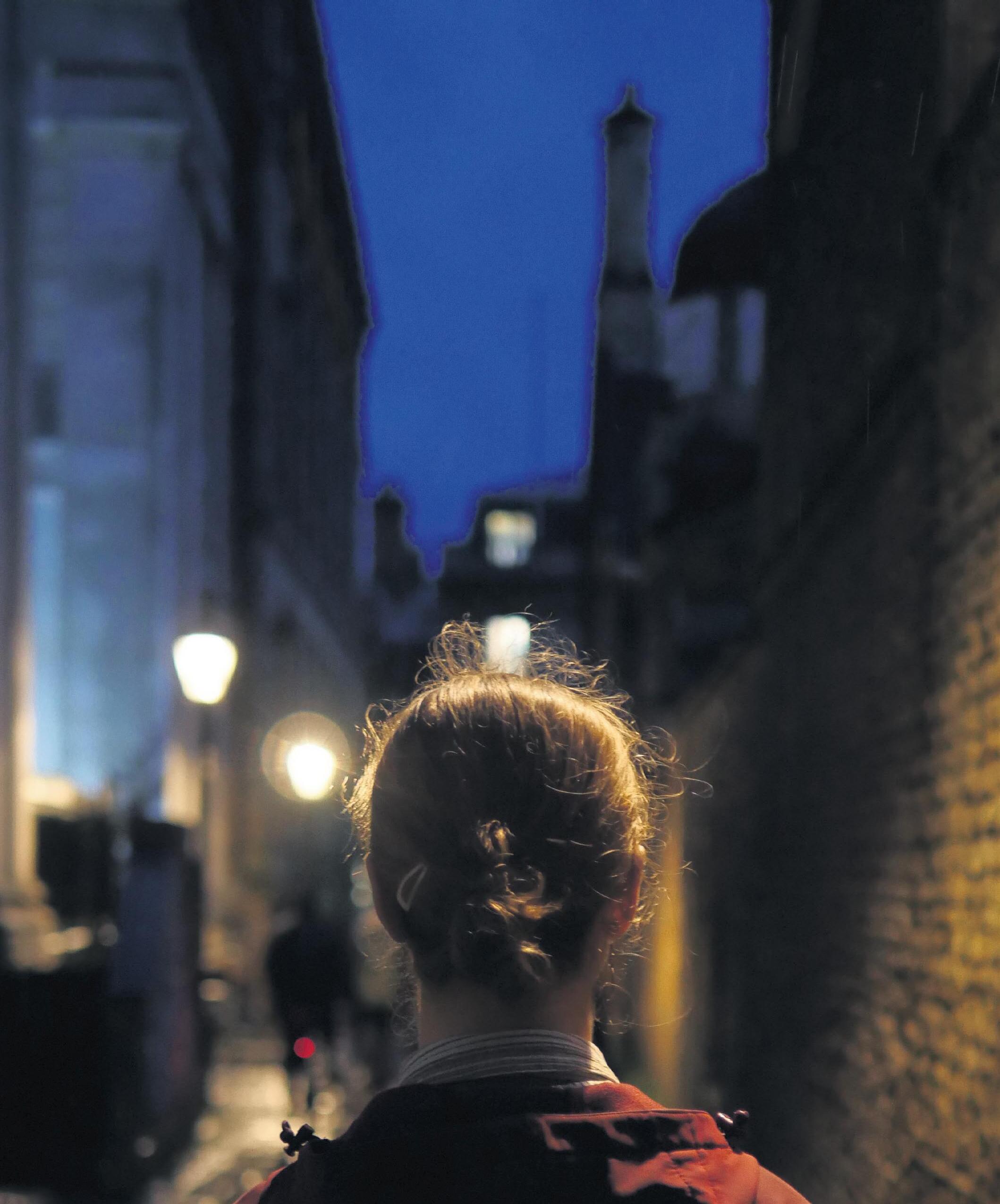
encourage Market Square stallholders “to dismantle their setups at day’s end, thereby preventing obscured areas beneath tents.” Evidently, there is some efective collaboration between city authorities and student representatives. So, why aren’t such initiatives more widely known?
Having been made aware of the Market Square project, Maya felt reassured by the idea of CCTV surveillance and the ability to contact relevant authorities, if, for example, her “phone was dead” and she “felt vulnerable or was being shouted at or followed.” “hat’s such an amazing initiative […] it’s so important to feel seen,” she exclaimed.
Sara, a second year student, agreed that she could see herself using the intercom if she “felt unsafe walking home after a night out.”
Like Sara, many Cambridge students pass through Market Square, after exiting nightclubs in the vicinity. In a vulnerable situation, it’s possible to have a quick conversation via the intercom with CCTV operators, who can summon police if necessary. his may be enough to deter potential conlict, settle nerves and provide a safe space to wait for help to arrive.
Raising students’ awareness of help-points and support in the city is a relatively small task, which has the potential to have a large impact on the safety of female students. he dissemination of further information amongst the student body would not be diicult.
As an easy irst step, Isla recommended “placing posters on college noticeboards, in plodges, college bars, and across faculty sites.” Meanwhile, Amelia suggested harnessing the network of student JCRs. “College welfare and women’s oicers could introduce information during Fresher’s Week talks or put it in the Safety and Information packs, which [some] colleges give out to their freshers.”
Elleni explained that already “welfare oicers are encouraged to share vital resources available [to students] on group chats and social media platforms.”
he secret to the success of such schemes is public awareness. If women and girls are unaware of help-points, they gain no beneit from them. And it seems that many students just don’t know what is out there.
Zindzi Khaya Douglas-Pedersen speaks to the people behind the Mastercard Foundation Scholars Program, providing scholarships to African students
In today’s tumultuous geopolitical landscape of climate change and regional instability, a spotlight is shined on the African continent, which o ers boundless opportunities and the fastest growing youth population in the world. To unlock this potential, young African innovators need to be included in decision-making and the development of sustainable solutions to ensure historic patterns of resource exploitation do not endure.
It also gave me the con dence to see myself as a future leader, ready to make a real di erence
In 2022, the Mastercard Foundation Scholars Program was introduced at the University of Cambridge, providing African students with a fully-funded scholarship to complete their Master’s degree,
supporting 58 students from 14 di erent African countries in the class of 2024/25.
Dr Tabitha Mwangi, the programme director, said its aim was “to have representation from all over the continent, removing barriers so that anyone, from anywhere can come and do a Master’s.”
She said, “what really motivates the whole team is to see just how well the Mastercard Foundation Scholars do as they develop con dence that they belong here.” Beyond the student nancing, Mwangi emphasised, “the ethos of wrap around care,” including termly leadership training, entrepreneurship workshops, mentorship support, and networking opportunities.
In order to amplify the voice of the continent, African leaders need to be representative of the youth demographic. is requires closing the current gap that exists whereby the average age of African leaders is over 60, juxtaposed by a population with an average age near 20. abiso Ncube, who is the Mastercard Foundation Scholars Council Representative said, “the leadership courses aim to instill in us the concept of transformative leadership, empowering us to initiate meaningful change.” He re ected on how his younger self “would be in disbelief and shock” if he knew that “despite the
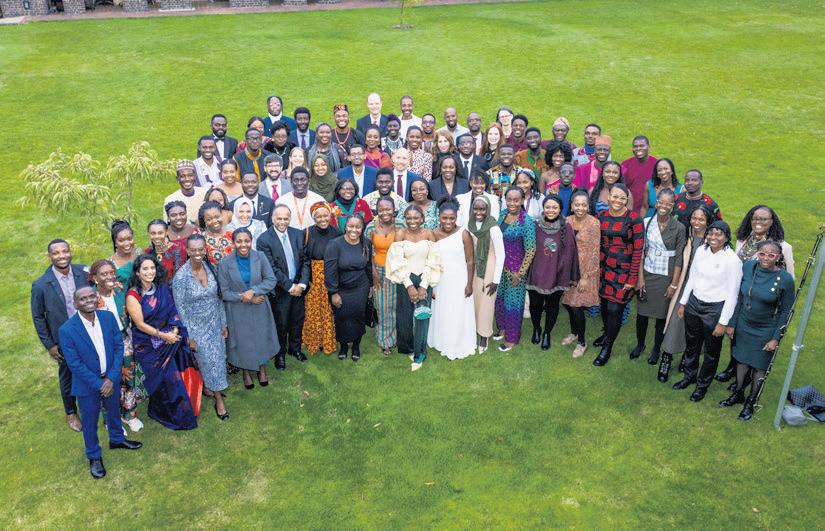
roadblocks and detours he had to endure, delay did not mean the denial of his dreams” as one day he would study at Cambridge. abiso said, “growing up in Bulawayo and hearing teachers praise you […] you don’t pay much mind to it, but now looking back it’s like, wow, they really saw something in me.”
Another essential pillar of the programme is its focus on driving innovation and social ventures through the collaboration with the King’s College

Entrepreneurship Lab – one element of the partnership being the Social Ventures Residential during Lent term. Claire Matsika, an MPhil in Biological Sciences, said, “the residential showed me that business and social impact can go handin-hand,” continuing, “it also gave me the con dence to see myself as a future leader, ready to make a real di erence in African food security.”
Yet for some students, myself included, the true value of the framework for
the Mastercard Foundation Scholars Program has been its ability to forge genuine friendships and a shared sense of community among the cohort, which would have been otherwise di cult to achieve as an international student.
Great Nnamani, an MPhil Development Studies student, a ectionately noted that “nothing beats the beautiful relationships and bonding Mastercard Foundation Scholars have made – it’s like a home away from home.” He emphasised, “I am delighted to be part of the energetic young people that are keen on making change in Africa and contribute to its social and economic development.”
Although still in its nascent stages, it appears that the Mastercard Foundation Scholars Program at the University of Cambridge has tapped into something special. Beyond granting African students access to Cambridge, it creates a transformative network of young people, with leadership and entrepreneurial skills that will be critical to driving sustainable change on the continent. By 2030, 500 students will have passed through the programme, ensuring Africa’s story is shared with the world. So far, when it comes to creating an encompassing scholarship framework, it looks like they are mastering it!








































































































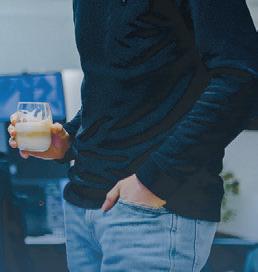





















Teymour Taj keeps you up-to-date with the latest scienti c studies
Gravitational bending of light caught on camera
e European Space Agency’s (ESA) Euclid space telescope has captured a picture of a complete ‘Einstein ring’ around the galaxy NGC 6505, 590 million light years from Earth. is beautiful phenomenon is a consequence of Einstein’s theory of General Relativity, which predicts that the mass of the central galaxy distorts space itself around it. is means that the galaxy acts like a spherical lens, bending light coming from behind and magnifying it. is is known as ‘gravitational lensing’.
is e ect allows us to see a background galaxy 4.42 billion light years away. e alignment of the two galaxies was perfect when the picture was taken, meaning the light from the background galaxy formed a perfect ring around the foreground one. e e ect of gravitational lensing is an incredibly useful tool for astrophysicists, allowing us to examine the properties of objects normally too small or far away to be seen. Since the light coming from these galaxies was emitted billions of years ago, we can use this lensing to investigate the history of the Universe, potentially unlocking the mystery of the ‘dark energy’ powering its expansion.
Sni ng Pharaohs to study mummi cation
A group of academics have studied the ancient Egyptian method of preservation of the dead by analysing their smell. Using their own noses as well as scienti c instruments, they have investigated the odours of mummies to determine which balms and resins were used in the mummi cation process. e
advantage of this method is that it is relatively non-invasive, removing the need to take samples from fragile bodies. It is also a perhaps more ethical way of studying human remains.
Interestingly, the researchers found no correlation between the smells and the conservation states of the mummies. e volatile organic compounds associated with smells were categorised as being from conservation products, synthetic pesticides, or products of biodeterioration. ey noted the similarity in the pro les of mummies from the Late Kingdom of Egypt, which suggests that this method could be used to identify the time period when mummies lived.
can act as a plaster for plants
A Spanish study has revealed that cellulose (the main component of plant cell walls) produced by bacteria has the ability to heal plant wounds. Bacterial cellulose has already been used to treat burns and wounds in humans. e scientists cut small parts of the leaves of a lab plant and treated the cuts with patches of bacterial cellulose, which had silver nanoparticles added for disinfection. After a week, the wounds had closed in 26 out of 30 treated plants, while only ve out of 30 untreated plants closed their wounds.
In addition, formation of new plant tissue around the wound was observed in the treated plants, but the untreated plants’ wounds looked dry with no tissue forming. e study was repeated on a di erent type of plant, giving similar results. is paves the way for the cellulose patch to be used in agriculture, such as for preserving cut plant material or acting as a growth medium for plants in the lab.
Tales of serendipitous discovery crop up again and again within the history of science. From the apple that inspired Newton to formulate his law of universal gravitation, to Fleming’s accidental discovery of the antibacterial e ects of penicillin, to the strange ‘bit of scru ’ on Dame Jocelyn Bell Burnell’s chart recorder that led her to describe the rst pulsar, the ‘scientist stumbles across major breakthrough’ trope has become a classic. No doubt part of the reason these tales have persisted is that they make for such good stories, but good fortune does
❝ When you work fourteen hours a day, seven days a week, you get lucky
seem to play more of a role in scienti c discovery than one might predict. It’s di cult to quantify the exact contribution of serendipity to progress within
research – studies have made estimates as low as 8.3% and as high as 35% – but appreciating its role is crucial if scienti c

To attribute all scienti c discovery to luck would be foolish, ignoring the years of hard work and trial and error necessary to generate an environment that will bene t from serendipity. Louis Pasteur, the French microbiologist responsible for a slew of developments during the 19th century (he most famously invented the process of pasteurisation, but also
was a “chance discovery,” nevertheless insisted it was the outcome of “planned experiments” taking place “in the framework of systematic pharmaceutical, chemical research.”
chemical thing e , in which

In addition, it is one thing to identify these anomalies, and quite another to recognise their utility. e word serendipity itself was coined in 1754 by Horace Walpole, taking inspiration from the Persian fairy tale ree Princes of Serendip the heroes “were always making discoveries, by accidents and sagacity, of things they were not in quest of.” It’s that sagacity, arguably, that is the more important ingredient in serendipity in science. It is only possible to identify a solution when equipped with a full understanding of the problem, meaning a thorough knowledge of the eld of research is crucial. is requires years of preparation, immersion and experience – it’s no coincidence that scienti c genius tends not to peak until middle age. It was only because of Fleming’s experience in the Royal Army Medical
Corps, where he witnessed the death of many soldiers from sepsis following wound infection, that he was able to identify the possible value of penicillin for treating bacterial infection. To quote Pasteur again, “chance favours
Call me cynical, but

played a role in
the development of rabies and anthrax vaccines, as well as making progress in the study of molecular asymmetry and fermentation) could certainly be considered to have been smiled upon by the gods of scienti c fortune. In fact, Pasteur was careful to emphasise the relative insigni cance of chance in his success, maintaining that “when you work fourteen hours a day, seven days a week, you get lucky.”
I’d argue chance is just a small component of these serendipitous discoveries. Although many ‘happy accident’ discoveries arise through unforeseen experimental error, it is only with the implementation of careful control conditions that such unexpected ndings can be identi ed. Albert Hofmann, while admitting his synthesis of LSD while researching ergot derivatives
maybe reaching a point where we can’t rely on serendipity to drive proand
gress. e middle portion of the 20th century is often hailed as having been the Golden Age of scienti c discovery, especially in medical research – from the discovery of penicillin, the development of vaccines against polio, diphtheria and tetanus, the rst successful organ transplants, renal dialysis, the contraceptive pill, and the discovery of the link between smoking and lung cancer. Perhaps serendipity was a solid foundation for scienti c advancement, because everywhere you looked there was a new discovery waiting to be stumbled upon; proverbial Newton’s apples raining down from the sky. Now, it seems the possibilities, or at least the low-hanging fruit, are being rapidly exhausted, with the increments by which the frontiers of science are being pushed forwards becoming smaller and smaller in many elds.
ese days, a far more methodical strategy is often necessary. is is particularly true in the eld of antibiotic development, for example, where the looming threat of antimicrobial resistance means we can’t a ord to wait to get lucky. e systematic approach has its limitations, though: the very nature of experimentation means it isn’t possible to predict the outcome of a project at the outset. Baruch S Blumberg was studying di erences in blood antigens in different populations in Australia when he discovered the HBsAg antigen; an “apparently esoteric” project which led to the discovery of the hepatitis B virus. Blumberg concluded his 1997 paper with a reminder of the importance of this freedom of direction with scienti c investigation: “funding for basic research is based on the faith that it will, in due course, lead to an outcome that bene ts society.” e value of such apparently oblique research is repeatedly underestimated. Katalin Karikó was refused tenure by the University of Pennsylvania and discouraged from pursuing her work on mRNA, being told she was “not of faculty quality.” is work that “nobody believed” in ended up being foundational to the rapid development of vaccines against Covid-19. Although Karikó and her research partner Drew Weissman did eventually receive recognition – they were jointly awarded the 2023 Nobel Prize in Physiology or Medicine – this is just one example of the importance of seemingly tangential research leading to a major success. Of course we can’t rely on luck, but equally it isn’t always possible to target important findings – of-
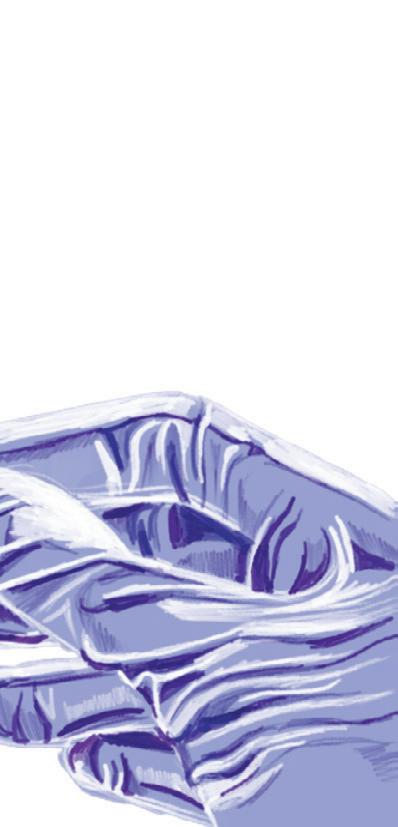

ten breakthroughs happen when scientists are permitted the freedom to muck around and get lucky. As National Institutes of Health (NIH) Director Harold Varmus wrote in 1997, “research aimed in one direction frequently provides bene ts in an unexpected direction.”
With the Trump administration intent on slashing grant funding in favour of targeting scienti c progress towards the “industries of the future,” it seems esoteric research will continue to be devalued, with scienti c research su ering as a result.
To put all scienti c development down to serendipity would be reductive and insulting, dismissing the labour of those behind the research. However, to ignore the importance of chance entirely could be far more dangerous.
Ironically, the rst result when you Google “impact of AI on environment” is the AI overview stating it “can have a negative environmental impact” but “can also be used to help address climate change”. Is this rather meta response accurate – is AI a net positive for our environment? Or is it time to stop asking it to draft our essays and solve our problem sheets in the name of saving the climate?
❝
AI is no longer just a robot for billionaires in Silicon Valley
On 30 November 2022, ChatGPT was released by OpenAI and quickly became the most widely used chatbot in Internet history, Now, it receives approximately 3.8 billion visits a month. AI is no longer just a robot for billionaires in Silicon Valley, an inaccessible concept for the majority, but ChatGPT and other chatbots have become increasingly common in our day-to-day
lives. Used for a multitude of everyday tasks such as writing emails, many students nd it essential for progressing e ciently with academic work – in fact, my maths supervisor encourages it.
However, this new reliance on technology begs several ethical questions, one about the value of human-completed work – is it disingenuous to use AI to write a birthday message? Why are we allowing AI novels and artwork to overshadow the creations of real people? Another ethical question is about the environment. With the everpresent threat of global warming, we must evaluate the impact of AI and its implications for our climate.
A large carbon footprint follows the development, maintenance, and disposal of the infrastructure necessary for AI. In 2023, OpenAI researchers suggested that since 2012, the amount of computing power used for deep learning research has been doubling every 3.4 months, and in May 2021 a report commissioned by the European Parliament estimated that by 2030, information and communication technologies (ICT) will use 20% of the world’s total electricity. Generating an AI image uses about the same
amount of energy as it takes to charge a phone. Alongside greenhouse gas emissions, the rate of consumption of clean water




is also worrying. By 2027, the global AI demand is projected to account for 4.26.6 billion cubic meters of water withdrawal. is is over six times the total annual water withdrawal of Denmark, or half of the United Kingdom. When one in three people do not have access to clean drinking water, this raises concerns about the morality of the overuse of AI.
On an individual scale, cutting down on use of chatbots and turning o automatic AI features will help. However, this will help in the same way cutting down on red meat and cycling do, which pales in comparison to corporations burning masses of fossil fuels – an often-quoted statistic states that 70% of international carbon emissions come from just 100 companies. A pattern of countries dedicating large sums to AI projects is cropping up all over the world – at the AI summit in Paris in early February, French President Macron announced that France would be dedicating €109bn to invest in AI. is demonstrates how Europe is ghting to compete on a global scale with China and the US by keeping up with their technological advances.
Macron referenced Trump at the summit, saying “Here there is no need to ‘drill baby, drill’, it is
just ‘plug baby, plug’,” suggesting that there is some aim to focus on more sustainable progress. Most countries have adopted some recommendations on the ethical uses of AI and the EU has adopted legislation to try to curb the environmental impact. However, the competition is ever-growing and it is likely we will see an equivalent of the ‘space race’ of the 20th century (when Kennedy told the chief of NASA he was not interested in space, but in beating the Soviets), where nations prioritise advancing faster than opponents over the preservation of the environment. As quoted by AI itself, it supposedly has the potential to have a positive impact. is suggestion takes the form of models which can predict climate change. It is also much more efcient at spotting patterns and anomalies and using historical knowledge to make these predictions. Despite this, it is clear that unchecked mass developments in AI infrastructure are going to be detrimental to the environment, particularly through carbon emissions and use of water.
So, in the same way you don’t need to ush your loo once a week, you can continue to use AI to summarise your reading … but maybe stop asking it to generate pictures of ‘happy Cambridge student’ in your Instagram DMs.






7 Hebrew Bible (6)
8 Move house (2,6)
10 Scottish First Minister 2014-2023 (8)
11 Praises highly (6)
12 Comprendo (5)
13 Anise- avoured spirit (8)
15 Metal with the symbol Ga (7)
16 Bodies (7)
18 Harry Styles’ song in the subjunctive, in a way (2,2,4)
21 See 22 (5)
22 With 21, Christian doctrinal statement turning 1700 years old this year (5,6)
24 “Oh no I dropped my _____ literature!” - pretentious man in a cafe (6'7") (8)
25 Ninja’s occupation (8)
26 Various (6)
ACROSS
7 Left o revolutionary aroma of the French spunk (6)
8 Putin’s friend, the kinky choir gal (8)
10 Reportedly, you and I sit on corrupted UCU member (8)
11 Crayons evenly jammed into soft Adam’s Apple (6)
12 Elements of truth in government? Object! (5)
13 Alien, after capturing setter, buried in low graveyard (8)
15 Leaves rst spoonful out of puddings (7)
16 Cite lad developing vernacular (7)
18 Stealin’ from child in college (8)
21 Old fart will break wind (5)
22 Twisted part of fun event (6)
24 Bird angrily harms breast (5,3)
25 Rare scam arranged in military escalation (4,4)
26 Country starts spending, without even discussing economic needs (6)
1 Non-trinitarian Christian (14)
2 Renaissance vocal work, popularised in England by Morley (8)
3 Genocidal Cambodian political group (5,5)
4 20 shillings (6)
5 Man, for example (4)
6 Inventor of the words “fragrance” and “pandemonium” (6)
9 Botswanan savanna (8,6)
14 ick Highland drizzle, or Cockney for “pissed” (6,4)
17 e French word for this state literally means “in a belt” (8)
19 Greek city on the Nile (6)
20 Work (6)
23 Austen’s longest novel (4)
1 In error, record none hurt nearby (5,3,6)
2 Petrol fumes on the circle line (8)
3 Ailment at haphazard mining site (10)
4 Charming introduction to paltry Oxford education – thoroughly inferior classes! (6)
5 Banknote for Clinton, say (4)
6 Mean to decompose avian (6)
9 Prophylactics break up vaccine protest (14)
14 Casually omits you in conversation to get up and get wet (10)
17 Chuckle, but don't start slaying! (8)
19 Put money into trendy, sleeveless top (6)
20 More unfeeling than I say? (6)
23 A slice of banana and bread (4)
Create as many words possible with the letters in the word wheel, minimum 3 letters. You can only use each letter once and every word must contain the letter in the centre of the wheel.
12 words: good; 16 words: impressive; 22 words: try-hard; 26 words perfect.








Resident Varsity Archivist Anna Herbert delves through Varsity’s infamous letters to the Editors
e humble letter; a journalistic staple that has a deep history in Varsity’spast. Maybe you are itching to have your say in the next edition of Varsity? Or perhaps you need some motivation to send o that letter sitting in your drafts? Let Vintage Varsity bring you some inspiration. e introduction of vending machines into Sidgwick in 1968 certainly ru ed a few feathers, with one letter suggesting that the “merciless glare of these automatons” would prevent any meaningful relationships between History dons and their students. e solution? Sell the vending machines to the Engineering Faculty where “lively technical discussion of the intricate mechanisms would be the basis of “lasting friendships”. Maybe your complaint is somewhat more super cial; a bit of Varsity syntax not up to your standard, a missing comma maybe? For Allen, writing in 2004, it is the duty of the Varsity reader to be vigilant. With newspapers remaining “among the last bastions of our ne language,” Varsity’s spelling must be a form of resistance in this “time of war”. To clarify, the issue on which he writes was a typo: “harrasment”. In 2003, the Rhadegunds took to Varsity letters to appeal to readers for “the return of our initiation chalice,” to “help an old man and his friends nd happiness”. e importance of the chalice could not be lost on the reader, as the president lamented: “it’s no fun drinking port out of a vacuum cleaner”. If you have lost something dear to you, and Lostbridge is not quite cutting it, take a leaf out of the Rhadegunds’ book.
In response to an article criticising Architecture’s “masochistic” work culture in 2006, Ranald Lawrence (“A Very Busy Architect”) stated: “ is letter is the only procrastination I’m allowing myself for the day.” Whether you are a busy STEM student, or you spend your day swanning around Sidge, a new method of procrastinating is de nitely always welcome.
At one point in 2003, the paper suffered from an unfortunate drought of letter writing, leaving the editors to complain: “We haven’t got any letters to publish this week, because you were all still sunning yourselves on exotic holidays and the like while we produced a newspaper. So pull your collective nger out, re o an incensed missive or two. You know it makes sense.”
Whatever you do, please make sure your letters are up to the high standards of the Varsity reader. In 1995, Steve Torpey complained that “Letters complaining about Varsity being crap aren’t as good as they used to be.” Indeed, if you think this article was a load of rubbish and a complete waste of time to read, please feel free to get in touch with us at letters@varsity.co.uk and let us know. We would really appreciate it.

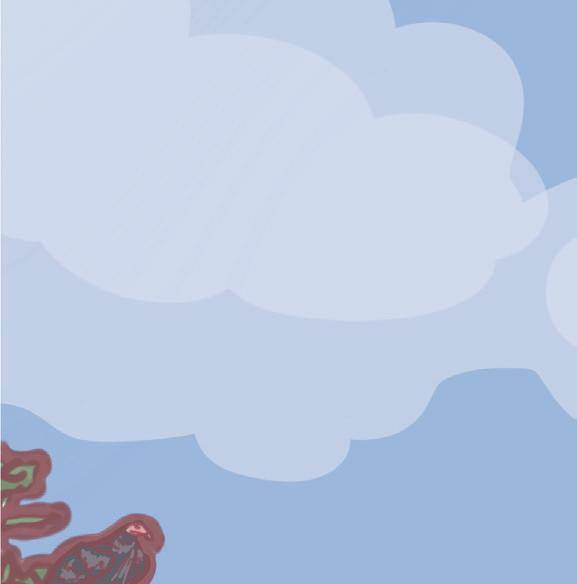

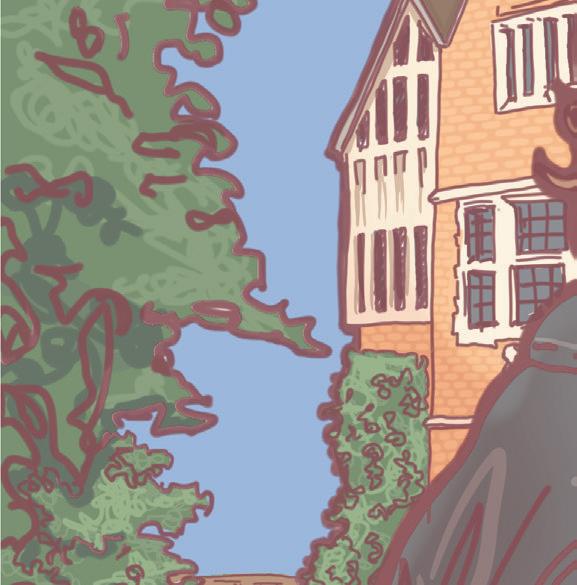




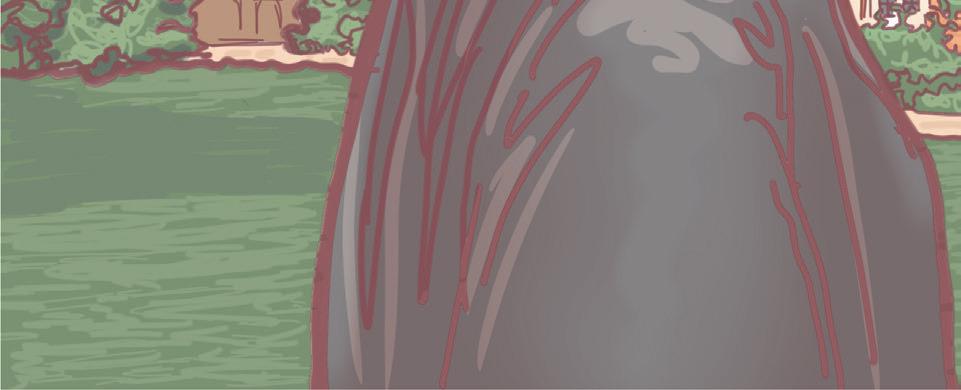



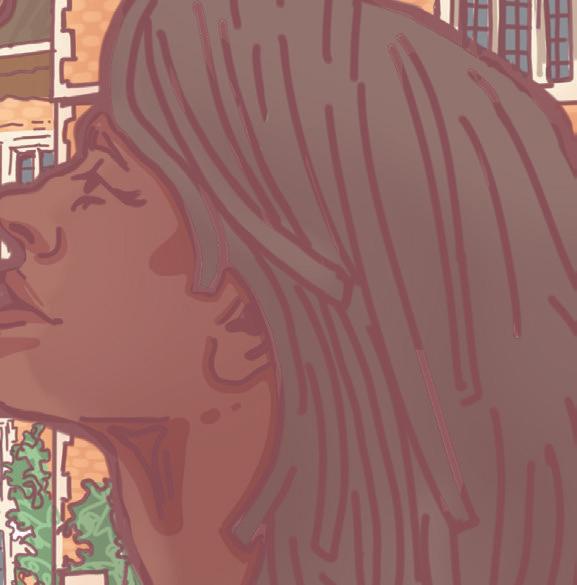
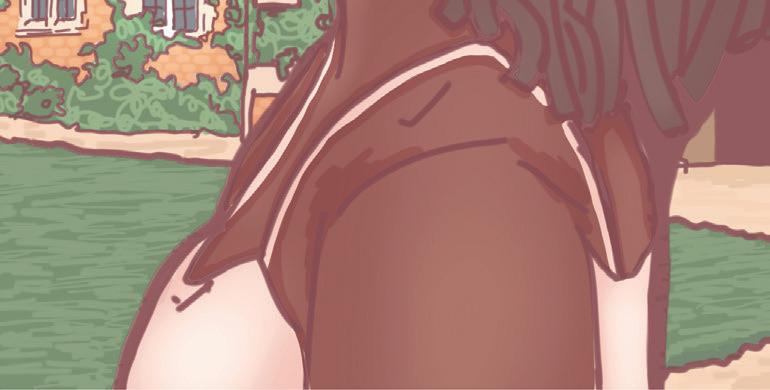


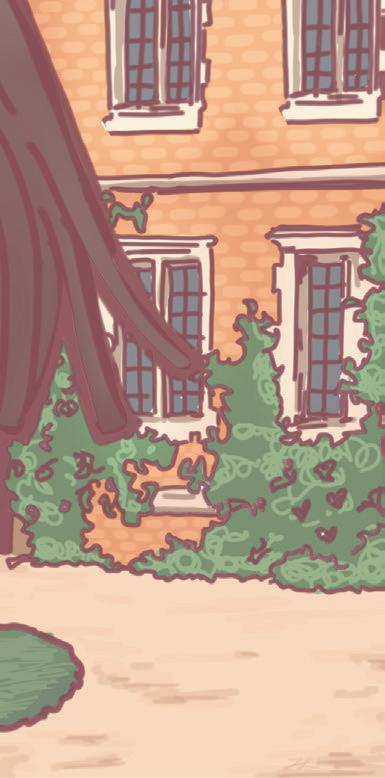
In a world of failed Hinge dates and awkwardly bumping into your ex-situationship in the freezer aisle at Mainsbury’s, it may seem like Cambridge dating is all doom and gloom. However, the fact still remains that many happy couples have found, and will nd, true love in Cambridge. From late night Gardies trips to an engagement on the Bridge of Sighs, these Cambridge couples from years gone by are the perfect post-Valentine's day reminder that true love really does still exist.
Harriet Peachey-Otter and John Otter, together for 14 years
We met at Tit Hall on the rst day of Freshers’.
As I (Harriet) was an English student and John was an Engineer, my chat was about as interesting as you would expect, starting o with the question “are you a bath or shower person?”. Needless to say, sparks didn’t y until midway through rst year…
I think my favourite memory is the rst night we kissed. I didn’t want anyone in college to know… but I hadn’t

tionship was when we became parents in 2020!We have had to grow up a lot since we were students and gure out where we want to go with our lives. Not to say we’ve got that gured out – we still spend huge amounts of our time daydreaming about alternative lives and, who knows, maybe we’ll make it happen once our daughter is older.

Adam Joseph and Gabrielle Joseph, together for 23 years
Our favourite spot was Grantchester, and we have amazing memories of cycling out there together as students, especially in May Week. So much so that this is where John proposed to me in 2016!
“Loving and learning” describes our time at Cambridge.
Moira and I (Julian) met on our rst night at Trinity Hall (1981). We were both freshers (I studied Law and Moira studied NatSci). My roommate was a fresher medic who had met a female fresher medic, and they had both agreed to meet in the Porters’ lodge together with some fellow freshers they would each nd to bring along to go to the pub. He asked me to join him and the female medic asked Moira to join her.
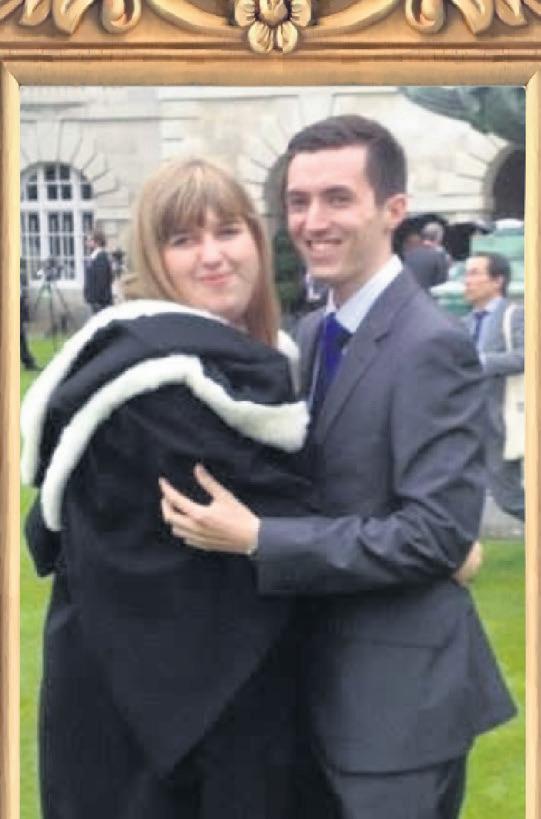




We met partly at Trinity Hall where Gabrielle was studying NatSci and I (Adam) was studying Social and Political Sciences, and partly in the cramped Varsity o ces on Trumpington street. Eating cold noodles together at 3am as you try to get the newspaper completed is a great rehearsal for having a newborn!
factored in that John was dressed as the hulk that night, caked head to toe in green face paint. So after we kissed the evidence was, well, written all over my face!
I really loved our Valentine’s Day date in third year when we saw the most beautiful cat
My rst impression of Moira was that I was besotted with the very pretty Geordie girl, but couldn’t get to speak to her at the pub. Moira spoke to other








When we rst started going out we were conveniently living next door to each other, so we just started spending loads of time together rather than going on formal dates. I do remember going out to a nice pub for a romantic dinner pretty early on. It felt adventurous leaving Cambridge during term time; even Girton seemed impossibly far away at the time!






Our college and coursemates were semi surprised when we o cially became a couple, but they also semi called us a married couple even before we started going out. I do remember bringing a friend back to my room after lectures and having to do some explaining as to why so much of Gabrielle’s stu seemed to be in there before we were o cial.






My favourite tradition had to be late night chips at Gardies after nally getting Varsity warm chips before going to bed and knowing you were just going to sleep until midday Inspiring, intense, and indelible would de our Cambridge experience (yes, we’ve still not moved beyond alliteration!).

I think the biggest evolution of our relao to print. ose describe

We never saw him again, but nine ago we got a kitten looked just like him, and we still have Monty to this day.
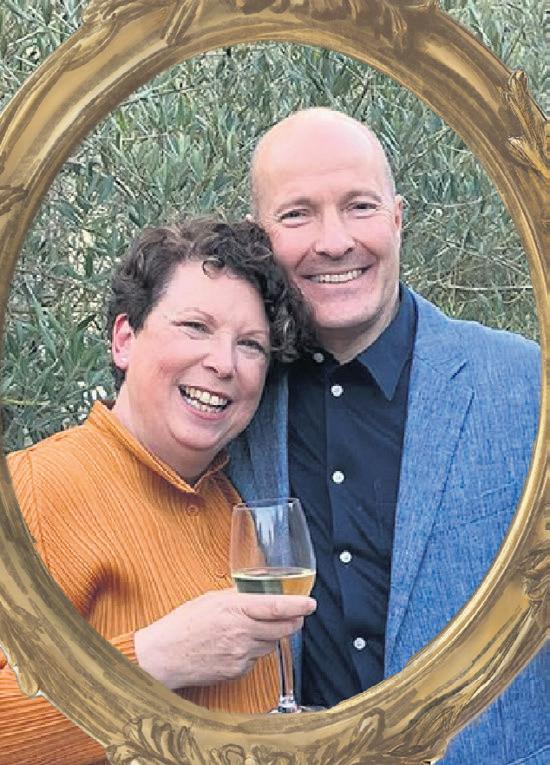





guys in the group and didn't

The day Moira walked across the dining hall to say





“hello” was my most memora-
ble moment in our relationship.
A wonderful privilege would be our way to describe our time at Cam-

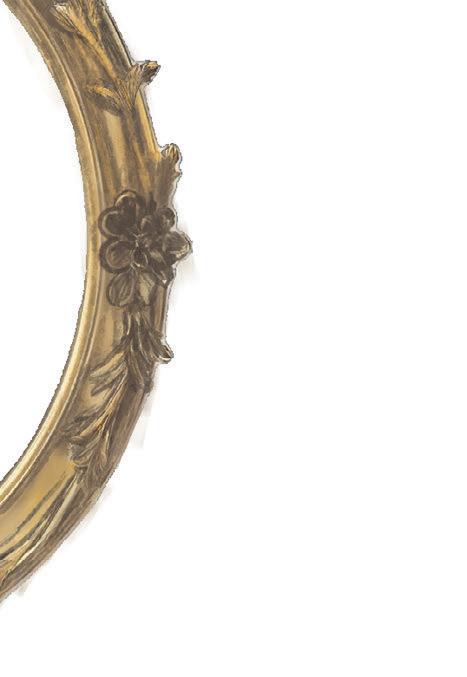
were at her at in London which was not far from where I lived at the time. Susie made the most delicious macaroni cheese. Ever since then she always makes macaroni cheese on the anniversary of our rst date.




DavidHerman and Susie Herman, together
We met in Susie’s rooms at Trinity Hall in October 1977. It was her rst term and my fourth term at Cambridge. I (David) was studying History at Trinity. She was studying Philosophy at Trinity Hall. at rst
My rst impression of her was love at rst sight. She was so beautiful and so interesting and had the loveliest Our rst date was 13 November 1984. We Day on the way back from dinner.
“What took you so long?” was the reaction from our college and course-mates when we got together! e three most important things in my life since Susie and I started living together have been: Being married, having three lovely children, and having four (hopefully soon to be ve) grandchildren together. ese have all changed my life for the better in more ways than I could ever have thought possible.
Meeting Susie and then having a family together has enriched my life beyond words. We both made many lifelong friends at Cambridge, most of whom we still see regularly, though, sadly, three have since died, one of whom was the best man at our wedding.
Justin Jacinto and Irina, together for 25 years
We met at Trinity Hall in 1999. Irina was in the last year of her PhD in International Relations and
I (Justin) was doing an M.Phil in Environment and Development.
Our rst date was at Michel’s Brasserie, which was by Magdalene College and is sadly now gone. It was a cold evening at the end of Mich- aelmas
term and the restaurant was
ey always ended with ‘Go West’ by Pet Shop Boys. We still aren’t sure why!
Lesley and Mark Robinson
refuge with boat


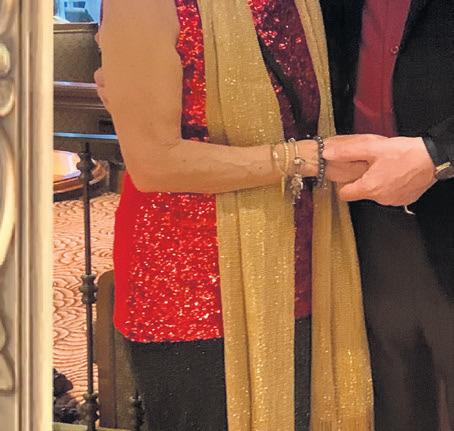

its Christmas dec- orations. e dinner was lovely, and Irina only later explained to me after that Cambridge students typically didn’t go to such nice restaurants on rst dates.
e most memorable moment of our relationship happened at Oxford! After a break in our relationship, we were both there for our matches in the Varsity Games. ere was a lovely post-match black-tie dinner and celebration at Freud that year for all the club sports. At some point after eating and dancing together we agreed that we had a wonderful time with each other and should be a couple – and have been ever since.
ere is nothing like a Cambridge May Ball. We were fortunate to be able to go to several through friends at other colleges. ey became even more special to us when we attended the St. John’s ball a couple years after graduating, and I proposed to Irina on the Bridge of Sighs. We also loved the college bops. Trinity Hall was one of the best and held them in the spacious old JCR (sadly now gone).

Mark and I met at Churchill in 1976.We very much enjoyed our time together learning to row – we were in the same novice – I was the cox and Mark rowed Bow. It was very enjoyable telling eight strapping lads what to do. To this day I still nd myself telling him to “Touch it Bow”. We have too many memorable moments to mention. Maybe feeding duck pate sandwiches to the ducks from a punt, dancing to ‘Benny and the Jets’ in a courtyard after a tea party, listening to ‘Dark Side of the Moon’ all night in a friend’s room… Our advice to maintain a long relationship is to laugh together every day. We very much enjoyed the Churchill Hatters parties (twice a year) where everyone wore silly hats and drank a special recipe, lethal punch.
We would describe our Cambridge experience as… privileged (we were able to meet amazing people (e.g. each other!)), challenging, and excellent.
loos. is was the era of Disco! Albert Scratchings night at Churchill in RAG week was also a highlight. Mike ran the custard pie hit squad. I was custard pied for enjoying dancing to Churchill band eGits
have some complaints…

My three words to describe the Cambridge experience would be “destination” (I decided at ve that I was going to go to

(which included lm director Marc Evans and lmproducer Andy Eaton). ere were random custard pie hits on the night, and mine was not sanctioned by Mike (or so he says!) e highlight of the evening was the Russian Omelette competition which was won by Marc.
Can’t forget the annual bed race – a completely lethal race around the centre of Cambridge on hospital beds or, in Churchill’s case, a hospital bed re-engineered by the engineering students. Churchill won, although Emma did
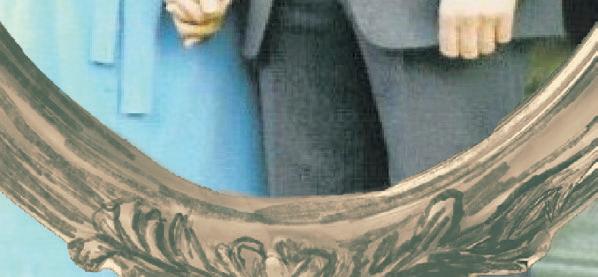
Cambridge), “rollercoaster” (a time of many ups and downs), and “mine” (I feel I own some tiny share of Cambridge).


Mike and I met at Churchill, where Imatriculatedin 1978,andMike 1979. One of our favourite memories was Wednesdayevening Bops in the cricket pavilion, courtesy of the Pleasure Machine disco – apparently named because it was funded by the condom machine in the

















We stock a variety of easy-care houseplants, some rare ones too! Plus a range of interesting pots and planters, some handmade. We also make terrariums and have a variety of beautiful cards and books all with a houseplanty theme. Pop by! We’d love to see you.

One of the easiest ways to make your eyes pop is the classic medium of eyeliner. Whether you’re a fan of a sharp cat-eye or prefer a more natural wing, it’s time to expand to new eyeliner horizons. We would like to encourage you to experiment with colours, shapes, and styles to nd the best way to elevate your makeup looks.
e earliest examples of eyeliner come from the ancient Egyptians, with Cleopatra – a patron of the original black cat-eye – using kohl, a product originally made with lead, charcoal and plant oils. Kohl was a widely used product across Asia and Africa, with records of both men and women sporting a black waterline in ancient China and Japan. It was believed to signify health, status and ward o evil spirits. Kohl can be used today to create incredible
The sky (or your hairline) is the limit!

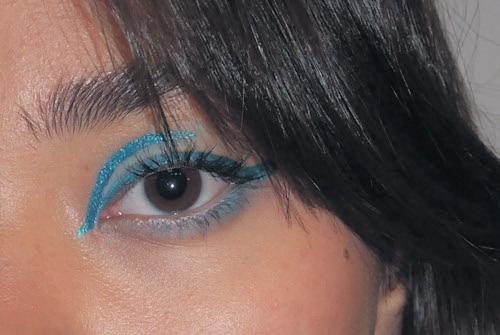
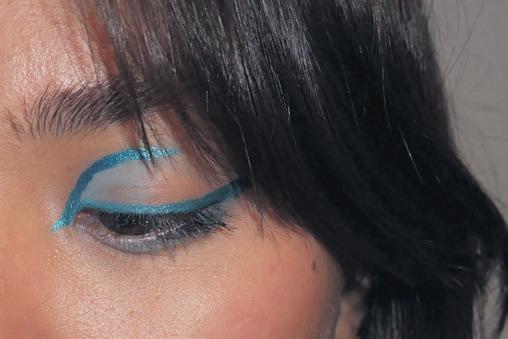
smoky waterline looks, but is thankfully now made from organic carbon and charcoal only.
With graphic liner, one of the most iconic eras is the 1960s, where a liquid liner cut crease and an aggressively pronounced bottom lash line was popularised by models such as Twiggy and Brigitte Bardot. is look was versatile and had the e ect of opening up the eye to create a doe-eyed, innocent look, often accompanied by a white wa-




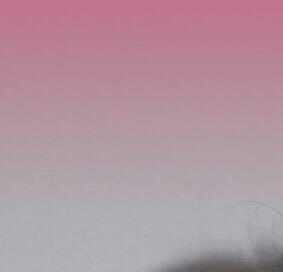



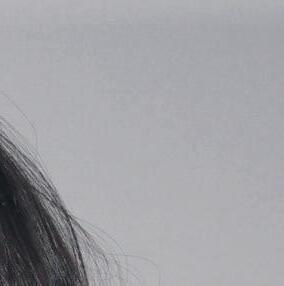

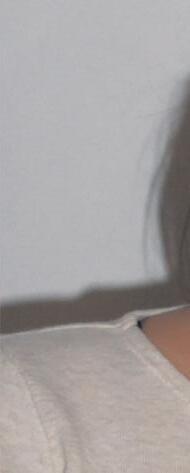








terline. Eyeliner continued to evolve throughout the twentieth century, with the ‘90s welcoming a smoky black eyeliner look with inner corner and under-brow highlight.
One of the most recognisable eyeliner looks of this century was brought to fame by Amy Winehouse, with an unpolished but bold black wing, accompanying her other iconic fashion choices, such as beehives, tattoos and cigarettes. In recent fashion, eyeliner has been a staple of many iconic looks, including the 2016 cut crease eyeshadow phenomenon, which was commonly accompanied by a classic wing and false lashes. is look owes its popularity to the Kardashians and the rise of makeup content creators such as James Charles, Je ree Star and Nikkie de Jager. Stars like Taylor Swift and Zoe Sugg sported the millennial cat-eye and bold lip to every red carpet, with its signature aggressive ick. e eyeliner craze was accelerated by the lockdowns of 2020 and 2021, where many fell victim to the dangers of too much free time and too few reasons to conform to social expectations. e virality of Chappell Roan and Charli XCX provides more inspiration for fun and experimental eyeliner looks – Charli’s party-girl aesthetic largely lends itself to wrap around sunglasses. However, when the shades come o , she sports an accentu-





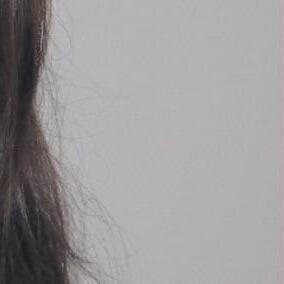
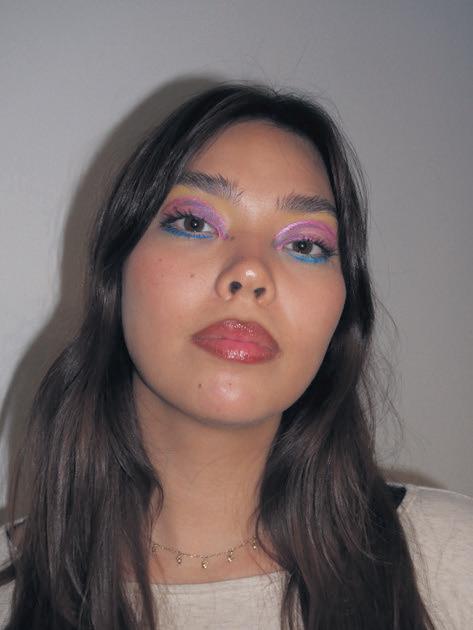




ated and dramatic cat-eye, extending into her hairline. Chappell is pushing the boundaries of experimental eyeliner, with her drag-inspired looks that range from butter y wings to abstract and geometric designs. She is also unafraid to go beyond her eyelids, with glued or bleached brows becoming part of the canvas. Graphic liner and experimental looks have been popular in the drag community for decades, coming into the mainstream through RuPaul’s Drag Race. Queens with unconventional looks have inspired new fashion trends, while others have echoed trends in history. For example, Suzie Toot draws on 1920s fashions, with a white waterline and Betty Boop lips, while Trixie Mattel has created her own signature eye look that challenges conventional beauty standards by rejecting them completely.
Now that you are inspired by the multitude of unconventional, experimental, and iconic eyeliners past, we encourage you to try something new this Lent. With graphic liner, the easiest way to achieve a colourful and clean line is to grab an angled brush, dip it in water and then in your most colourful eyeshadow, and go to town on your eyelids, temples and forehead. Start perhaps with a cat-eye, but with a coloured liner rather than the classic black. You can then extend this into an angular inner corner, or spice up the wing itself with di erent colours,
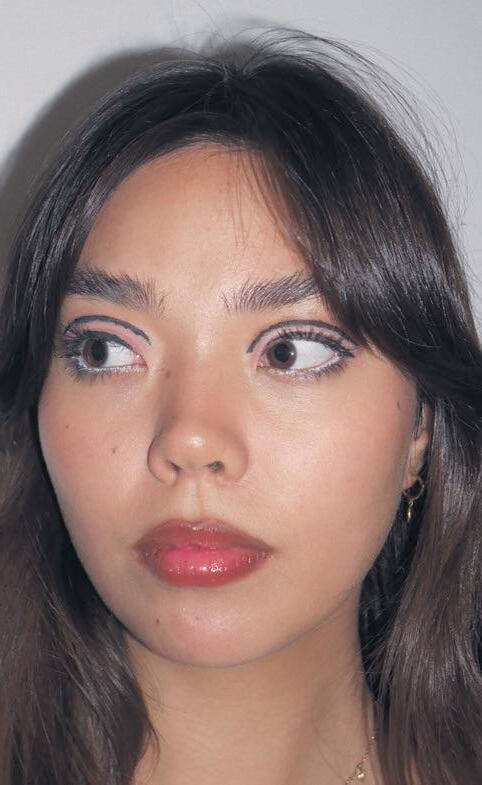
patterns and shapes.
If you are feeling particularly adventurous, here are our top tips for experimenting with your eyeliner:
●Don’t try the most di cult look rst! Start small and build up – your con dence and skills will improve with time and practice, so don’t be disheartened if the rst look is shaky.
●Use references – don’t underestimate the power of a Tiktok tutorial! Create a Pinterest board with your favourite looks and try some out before you shower, so if it all goes wrong you can wash it straight o .
There are no longer any excuses for a generic black cat-eye
●Make sure you’re aware of your speci c eye shape and the best looks for it. is can involve a bit of trial and error, as di erent eyes will call for di erent colours and shapes. Sometimes it is best to refer to a colour wheel and nd complementary colours to your eyes.
After this extensive deep dive into eyeliner and the endless possibilities that it o ers, there are no longer any excuses for a generic black cat-eye. Cambridge has an abundance of themed bop nights, providing the perfect opportunity for experimental looks under the guise of a costume and the safety of the low lighting in your college bar. e sky (or your hairline) is the limit!
Fashion Shoot Coordinator: Holly Hardman
Photographer: Niamh Ca erty
Makeup artist: So e Dolan
Models: Apple Sershi, Tally Arundell




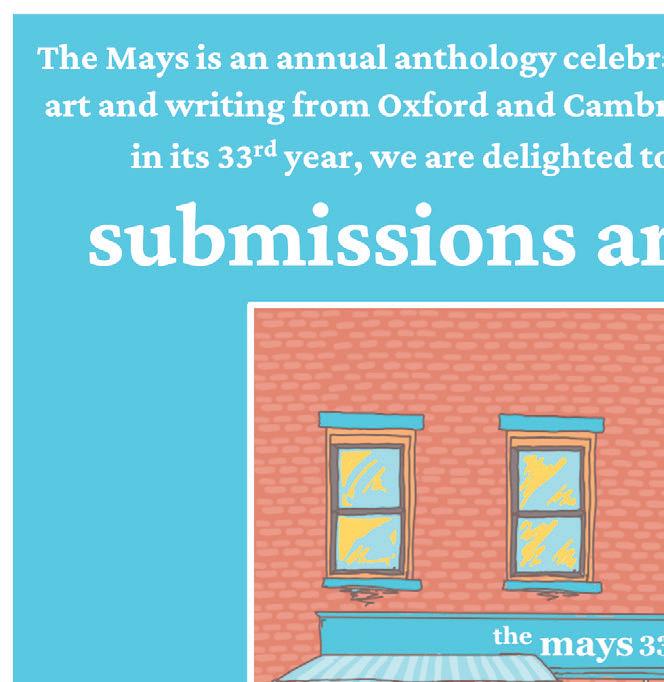
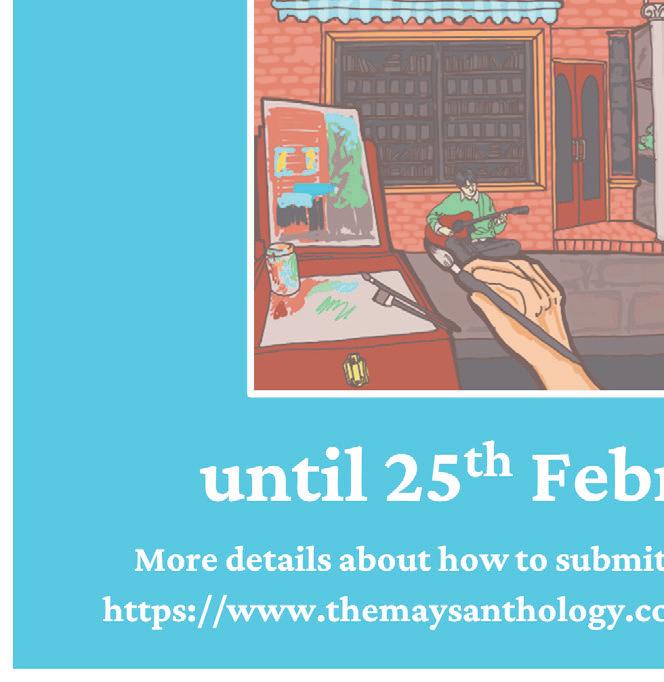




Inspired
Ihave never seen so many naked people in my life,” my friend from home told me three days after arriving in Murray Edwards. In fact, even to my sheltered eyes, there is something quite shocking about the sheer volume of nude women on display in my College’s Women’s Art Collection. As I wearily ascend the stairs to my accommodation after a long, hard day of lab dissection, I am confronted on each oor by a new woman, proudly nude in all her glory.

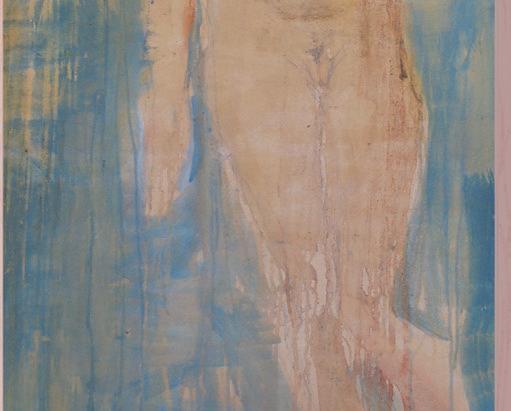
In truth, across the centuries, artists have had a curious obsession with the nude female form – it is striking how much meaning and symbolism can be found in such a daily reality, and how this varies throughout time. ere is an innate hypocrisy in our culture’s treatment of nudes. Some depictions of naked women are elevated to masterpiece status, presented as paragons of good taste, while other pieces, and actual female bodies by extension, are condemned as vulgar and obscene. Few people in the 21st century (or in centuries past) would consider Botticelli’s e Birth of Venus titillating or particularly obscene, due to its commonality and classical context, despite it ironically depicting the goddess of beauty, lust and fertility. In Ancient Greece, depictions of both nude men and women were common, though they represented vastly di erent ideas. Muscular nudes of male warriors were created to emphasise power, dominance and athletic prowess whereas the


softer, irtatious depictions of nude goddesses symbolised fertility and procreation. Surprisingly, the rst known nude depiction of Aphrodite was sculpted by Praxiteles quite late into the Grecian period, and presents her irtatiously, half covering herself with a cloth – as if caught unawares. is pose emphasises her sexuality, but also her flirtatiousness. Crucially, she is depicted with a sense of pride, free from the shame that often accompanies nudity in subsequent eras.
Ancient Greek sculptors aimed to capture an ideal of the human body, attractive but not for titillation – rendering these gures forever young and beautiful, representing national pride. is way of depicting nude women has in uenced much of Western art.
ere were fewer depictions of female nudity in late antiquity through to the Middle Ages, due to the rise of Christianity. ere were two main, yet wildly di erent, depictions of female nudity during this time: Eve and the Madonna. Depictions of Eve in the Middle Ages, such as ‘Expulsion of the progenitors from Eden’ by Masaccio, where her face is contorted into an agonising cry, use her nudity to represent her vulnerability. Gothic art similarly depicted nude women as sickly and fragile looking. e exception to this is, of course, the Madonna, who is depicted as beautiful in the context of feeding Jesus Christ.
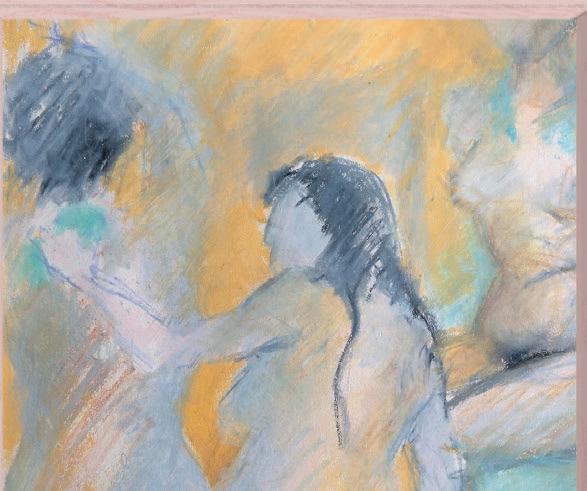


Artists have since challenged this unrealistic view of the female body: as simultaneously sexual and an object of classical beauty. Manet did so by depicting his nude women realistically and within the context of the time, without using classical references and biblical stories to render the nudity acceptable. In his painting ‘Olympia,’ he depicts a young prostitute wearing only a ower in her hair, a black string choker, and clogs, reclining in the same pose as Titan Vecellio’ s ‘Venus of Urbino’ (1538). However, Manet’s painting was much more challenging due to its harsh lighting and the direct, proud
gaze of the young girl. Manet challenged ideas of morality by transposing the nude gure from a historical to a modern context –elevating a prostitute to the level of a goddess, highlighting the hypocrisy of celebrating nudity as highbrow in certain contexts and condemning it as vulgar in others.
While ‘Olympia’ was controversial, the most ‘scandalous’ painting of the nineteenth century was Gustav Courbet’s ʻL’Origine du Monde’ (The origin of the World), which depicted a hyperrealistic, close up view of a woman’ s vulva and abdomen. Blurring the lines between what society deemed artistic versus pornographic, Courbet’s painting aims to depict realism and not to titillate through the un attering angle, the vulva being disembodied due to the composition, the pallor of her skin and the presence of hair, in stark contrast to the typical hairless depictions of women. It is di cult to decide if Gustav depicts his subject with respect or degradation, as she is without face or identity, yet the title highlights the hypocrisy of viewing the vagina as taboo and shameful.


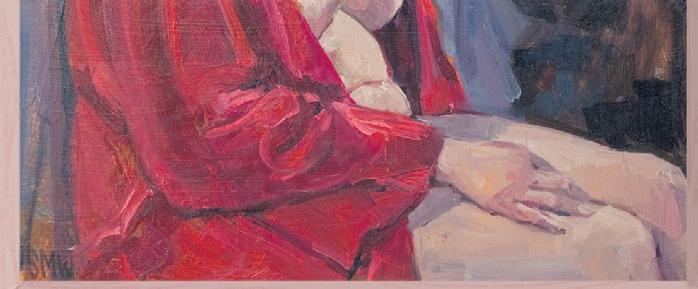
the vagina. It’s possible to scroll through reels and reels on social media of vulvas depicted in di erent mediums and levels of abstraction; hyper-realistic depictions of clay vaginas lined up in little white squares.
It’s undeniable that feminist artists of today still hold an obsession with female nudity – particularly
❝
She is depicted with a sense of pride, free from the shame that often accompanies nudity
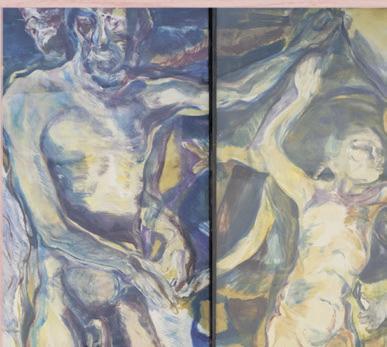
e sheer quantity of art like this dulls the shock these pieces once possessed. And perhaps that is their aim: to normalise and demystify part of the body possessed by about half of the population. However, something about boiling down an entire person to one organ feels voyeuristic and objectifying – there is something inhuman, but also powerful about a faceless grey wall of vaginas – the juxtaposition of the private, vulnerable nature an exposed vulva with the imposing display feels both powerful and a bit odd. In addition, one could interpret the sale of this vagina art on T-shirts, mugs and bags as another way to commodify the female body for capitalistic gain.

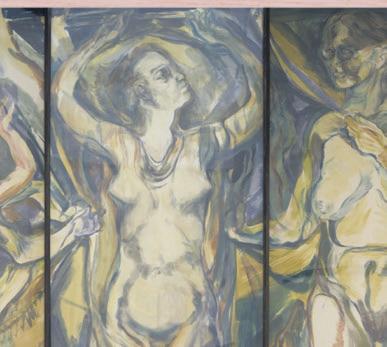

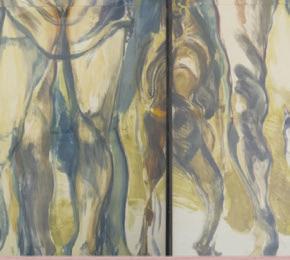
Compared to the number of detailed nudes I have researched for this article, Murray Edwards seems conservative in comparison. Still, there is a di erence in the nudes depicted here compared to those I have previously described. Many women are depicted in full, with “imperfect” bodies doing everyday activities, like relaxing in the bath or hanging up laundry – imbuing them with humanity. e taboo of nudity, and the blurry line between what is considered artistic or obscene will likely always hold an appeal for artists. Nudity is at once the most simple and complicated state of being.

ʼs architecture keeps students out rather than invite them in
Hailing from an underfunded 1960s state school, my visions of attending Cambridge before I arrived included ancient, gargoyled walls rising up around me as I sashayed through cobblestone streets in a Hogwartsesque gown – or perhaps I would be swallowed by marble busts who instantly recognised my inexperience and foreignness.
In the years that have followed, however, the wisteria-gilded walls of Christ’s have become an unexpected cradle of comfort, a familiar yet constantly awe-inspiring backdrop to academic achievements and positive memories.
Conversations with friends of similar backgrounds echo my own largely positive experience. We remark on the boost in productivity we feel studying in old, beautiful libraries, the sense of privilege and awe as we traverse medieval passageways, and the transformative experience of being the rst in a family to partake in centuries-old traditions framed by chapels, portrait galleries, and grand halls which were once reserved for an impenetrable upper class.
At the same time, the town and gown divide in Cambridge is embodied with crystal clarity by the architecture of the city. e compact, decorative centre

❝
e wisteria-gilded walls have become an unexpected cradle of comfort
vasive class system. Ella Peralta, a Downing student, remembers the “fanciness” and “intimidating” nature of her college when she rst arrived, while Alex describes his rst impression of Trinity as “a space that made me slightly anxious – some people seemed to understand how to operate in the large dining hall, with all of its wonderful formal dinners, and already had mastered the small talk at faculty social events, in ornate rooms lined with medieval paintings.”


is home to listed buildings and historical gems at every corner, while just less than a mile away, neighbourhoods like

did they do it?
Grafton and Mill Road, as well as Anglia Ruskin University, are denied the same investment.
As Alex, a Trinity student, re ected, “it is interesting that so many students I have spoken to in central colleges particularly seem to never leave the cobbled paths of the centre, lined by charming colleges, expensive chain restaurants, and shops.” e same painstakingly maintained buildings which give us the University’s trademark charm become a barrier to access to much of the city for its other residents.
e same can be said for the di erence between “old” and “new” colleges which sees King’s, Trinity, and John’s lauded for their classical beauty while newer builds are branded by some as “council estates” or “miserable blocks of ats,” despite their often
award-winning modern designs. In fact, as Dr. Marco Iuliano of the architecture department a rms, this style of building “embodies the laboratory of the future, a deliberate attempt to re ect the revolutionary ideas generated at the University by creating a rupture from the past.” Does our refusal to celebrate construction that dares to abandon Cambridge’s ancientness actually expose a wider issue of our institution’s deep roots in the past? Our interactions with space seem to re ect a common criticism of Cambridge, at once existing at the frontier of academia and lagging behind social progress in the rest of the country.
Even among the central colleges, architecture enacts a hierarchy which embodies the UK’s per-
Both, like myself, have experienced a certain loss of novelty at our once breathtaking city, as we rush to lectures or walk back from a night out, passing history without a second thought. And yet, it is always in my lowest moments of imposter syndrome and self-doubt when the walled gardens, stained glass windows and mahogany halls threaten to consume me once again. Centuries of history and exclusivity – both intellectual and social – ooze from the fabric of the city centre, and I question how it is that someone so distant from this picturesque world ever found myself in such a place. As Alex’s words echo, “I have found myself, dramatically, wondering if the stone walls of my college were built to invite me in, or keep me out.”
“Awoman must have […] a room of her own if she is to write ction,” declares Virginia Woolf in A Room of One’s Own: I’d say this is true for almost every aspiring writer. When I rst arrived in Cambridge, groggy with the three train-rides it had taken me and my family to get there, yet fuelled by a sense of optimism, I anticipated a room free from the inconveniences of the sounds of a vacuum cleaner, or the obnoxious whirring of a neighbour’s early-morning lawn-mower, something I’d found inescapable while attempting to compose a poem in my small Lancashire hometown. It would be, I thought, as if I was in my own small vacuum, every spare minute dedicated to the thing I loved most – writing. I soon realised just how deluded I’d been.
of other people’s checkered pyjama-bottoms.
Two weeks in and I was already experiencing the somewhat melodramatic e ects of a complete withdrawal from creative writing.
My inbox, once pinging with responses from various magazines I’d submitted to, now lay almost embarrassingly stagnant.
❝
Two weeks in and I was already experiencing complete withdrawal from creative writing
I told myself it was merely the result of an initial shift in workload between academic institutions, something I’d soon grow accustomed to.
exam, my painstakingly-composed revision notes spread out in a disorganised array before me. I quake to think of the consequences when neglecting a supervision essay with the same aim in mind now!
In the following days, I told myself I’d soon grow accustomed to the forlorn sight of drab grey buildings outside my accommodation window, the scu ed trainers that somebody had left dangling outside their bedroom window, seemingly to dry, and the ostensibly untimed, though suspiciously periodic, late-night re alarms. e view from the window and the trainers I grew gradually accustomed to, but I could never quite derive a sense of humour from the scowl-inducing minutes spent outside in the December-sharp cold, confronted by the sight
I recall how, very early on, in an e ort to replace the ful lment I derived from creative writing with that of essay writing, I risked merging the two forms in what can only be described as a disastrous feat. Needless to say, my supervisor’s closing comment was enough to make me cease with this approach: stay away from “imaginative embellishments,” I was told, feedback I later learned to value for its honesty – that is, after the initial “hypersensitive-Fresher” sting had worn o .
I soon came to recognise the hard-to-accept fact: that to juggle a Cambridge workload alongside the drafting and rigorous editing I’d become so accustomed to with my creative writing was, safe to say, highly unfeasible.
As a college student, I’d say I managed to balance writing and a school workload fairly well. Certainly, I recall once producing a mass of impromptu prose the night before a nal A-level
ere are times when eshing out the skeleton of a poem seems far more appealing than researching the riveting particulars of metonyms, yet I resign myself begrudgingly to a most thrilling and enthusiastic perusal of the latter. Why? Because as a Cambridge student, I’ve become accustomed to embracing short-term academic certainty over long-term careeroriented goals.
this Sophocles, I shall write: letters and prose and poetry, toward the end of the week; I must be stoic till then,” Pulitzer Prize winner Sylvia Plath writes during her time at Cambridge. Often, slipping under a tidal-wave of essay drafts, forms and supervision notes, it seems “the end of the week” will never come.





Despite the English Faculty’s e orts to publicise author-related events, I’ve learned that the actual number of attendees at these events is often uncomfortably scarce – “intimate,” as I once heard someone call it – leaving limited opportunities for potential networking. And this battle is not something a ecting just the contemporary Cambridge student-writer: “After this Racine paper, this Ronsard purgatory,




















Although I can’t quite see a feasible route around this dilemma (other than a complete othe-rails neglect of essay-writing), I do acknowledge that resigning myself to writing purely during the vacation period is not as horrifying now as it was when I rst arrived at Cambridge. ough I may not produce half as much as when writing year-round, I can say with absolute certainty that taking a step back from any kind of creative pursuit has its advantages: personally, I felt I approached my work later on with a renewed sense of vigour and purpose. Needless to say, whenever I overhear the names A.S. Byatt or Zadie Smith, I don’t think I’ll ever cease to be struck with that familiar feeling of halffrustration, half-awe, wondering: how did they do it?

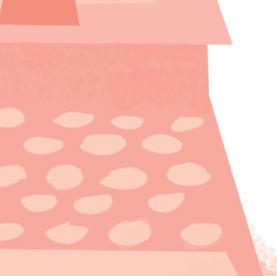






of think







Anna Herbert recounts her challenging attempt to combat the streaming industy’s gender listening gap
This year, my New Year’s resolution was to give up listening to men sing. When James Brown sang ‘ is is a man’s world’ in 1966, he painted a pretty accurate image of the music industry. 60 years on and the sector still has a way to go to reach gender parity. Female artists hold just over a quarter of the share of streams in the UK.
When a quick count of my Spotify stats at the start of the year revealed that over 75% of my top artists were men I was disappointed but unsurprised. Subconsciously I had subscribed to a preexisting bias running through the music industry prioritising men’s voices, words, and music: the gender listening gap. So, naturally, I set o on a mission to single-handedly dismantle the structural misogyny of the music industry.
For a month, I have (nearly) only listened to female artists, ditching Steely Dan in a quest to nd my very own Steely Danielle. My listening history reveals a chain of ‘Women of’ playlists, from folk to jazz to classical rock. My friends have humoured me dutifully, skipping songs by men on our pres playlists and sending me artist recommendations of women I might like. I must confess to the occasional slip up, with my fondness for playing Absolute Radio in the background proving to be my main downfall. For the most part, however, it has been women who have provided the soundtrack to my January.
Some digging into streaming data has left me shocked at the extent of the gender listening imbalance. At the end of 2023, EveryNoise reported that just under a third of women’s streams go to female or mixed gender artists. at in itself does not sound particularly great until you compare it to men’s listening patterns, with less than a fth of songs men stream being from female or mixed gender groups! is disparity is then reinforced
by an algorithmic bias, as pro t-driven streaming platforms are more likely to promote male artists in programmed listening, who are considered to have more cross-gender appeal. The imbalance in streaming patterns is not just gender dependent, it is also genre dependent. A quick grilling of a couple of my friends reveals, rather predictably, that those who listen to pop are more likely to listen to female artists than those preferring genres dominated by men such as rap, folk, and rock. Pop’s popularity among women accounts for the ability of female artists to succeed in the genre, but this can come at the expense of the legitimacy of pop, a genre often seen as ‘bad’ music. Spotify has pledged its commitment to gender equity through their Equal Hub; a collection of playlists and ‘Equal Ambassadors’ to support women in the industry. Yet I have been disheartened by


the amount of e ort it has taken me to listen to more women this month. While I have appreciated Spotify’s curated playlists cenetring women’s voices, I find them relatively narrow, focusing on a small range of already pretty well-known female artists. Spotify seems content with containing womentotheir own ‘Equal’ category, placing the onus on the listener to actively seek them out. Streaming platforms must take a more holistic approach to gender equality, to ensure users are also passively exposed to more diverse music. Music by underrepresented groups must be integrated into programmed music promoted to listeners. is article barely scratches the surface of the
❝
Spotify seems content with containing women to their own equal category
music industry’s deep rooted inequality. While I’ve been preoccupied by the gender gap in my listening history, things get a lot worse for women under the surface. Last year, a report for the House of Commons found that women represent 14% of songwriters, while the Musician’s Union found that women make up only 24% of the industry’s producers. Women face signi cant barriers to entry and success in the music industry, including discrimination, harassment, and unequal pay, all facilitated by an ongoing ‘boys’ club’ culture. Ultimately, the industry has a long way to go to reach gender parity, and its systemic inequality will not be xed by a few overly-enthusiastic listeners changing their patterns of consumption, but structural overhaul. A month of women in my headphones has honestly made minimal di erence to my everyday life, outside of the added hassle of nding new music to listen to, and the subtle sense of superiority that has accompanied discussions with friends. Now January is over, I have reintegrated men into my listening rotation, but they will be interspersed among a wide range of newly discovered women. So, while the music industry’s gender inequality may run deeper than the streaming patterns of the average Spotify user, I would still suggest that if men soundtrack your life currently, consider branching out and listening to some more women. You might nd that they are not half bad after all.
Concerts have been taking place in Kettle’s Yard, the house and gallery created by art collectors Jim and Helen Ede, since 1970. e Edes instructed that there be “at least three really good concerts every year” in the modern extension. at number is now exceeded each term: three regular concert series take place there, bringing new music, chamber music, and student performances into this unique venue. I attended one of the chamber concerts in January, a piano trio performance of Beethoven’s ‘Ghost’ Trio, an arrangement of Schoenberg’s ‘Verklärte Nacht,’ and a new work by professor of composition at the University, Richard Causton. I also caught up with Ailsa McTernan, the student representative to the committee which organises the concerts, about the musical activity at Kettle’s Yard.
Anyone who has visited the house will agree that the extension is gorgeously bright
Anyone who has visited the house will agree that the extension is gorgeously bright, simultaneously open and intimate, bustling with a well-curated selection of the Edes’ mid-century collection of art and sculpture. e concert setup is a wonderfully hodgepodge arrangement of chairs wherever they’ll t, with the front row of the audience sitting within reach of the performers, as if ready to turn the pages of their music. I was particularly amused
by those who chose to lounge, Jacob Rees-Mogg style, on an outrageously deep sofa to the side of the space, quite literally settling into the music. It’s not just the audience who are more relaxed in this space. McTernan re ected that the performers themselves often seem more at ease, chatty and engaged with the spectators sitting around them, without the division of a raised stage and dimmed house lights that separate performers from audiences in many more traditional classical venues. is felt like chamber music in the original sense of the word, intimate and relaxed music making in a domestic setting. I was struck by how the space shaped my experience of the music. Being so physically close to the performers a orded a sonic detail lost in larger halls. Hearing the inhalations of breath preceding the string players’ entrances, the violinist’s constant micro-adjustments to stay in tune, the cellist’s ngers dampening the strings at the end of a piece all foregrounded the bodily, material craftsmanship of music making. We were watching three long time friends and colleagues working together, negotiating and conversing through music, as much as we were listening to Beethoven, Causton, and Schoenberg. Without the acoustic airbrush of the rich reverbs in bigger venues, tiny imperfections and traces of e ort were preserved, giving a rare and precious glimpse into the intensely physical act of performing this music, and in turn the incredible skill on display to do so.
en there is, of course, the art. I was perhaps most excited to see how the music changed my perception of the art, and vice versa. Causton, when introducing his piece, shared one of his muses for
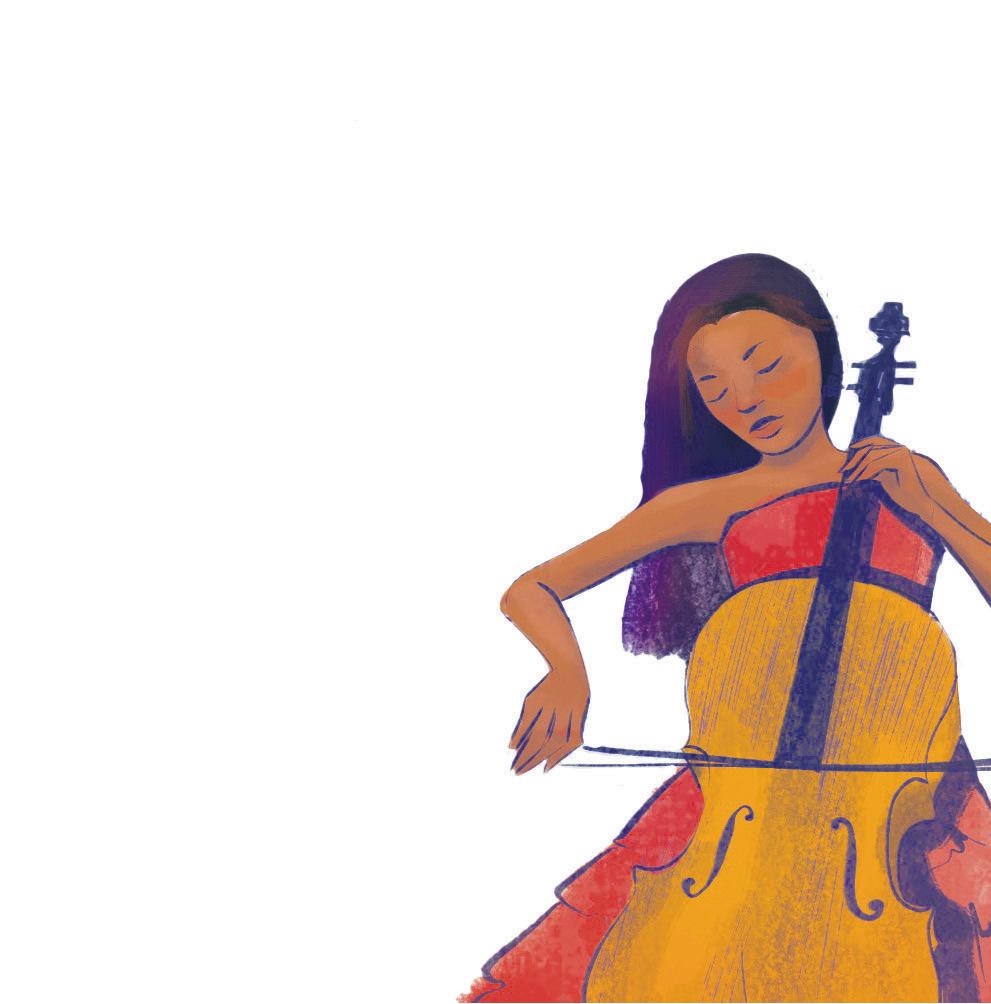
the project – the paradox of the stone angel, an image of ight rendered immoveable. is resonated with the concert as a whole, the immateriality of music turned material by the proximity to the performers, and the stasis of art made dynamic by juxtaposition to this eeting performance. e Braque-inspired Ben Nicholson painting of two guitars hanging above the piano seemed to start playing along. e subject of a portrait, who from my vantage point blended in with the audience members around her, appeared totally absorbed in the music. Both McTernan and I agreed that there is something of the Harry Potter staircase in the irrational notion one gets that you could ask the painting what it thought of the concert during the interval, and you’d get a response. The sharp binarism that can easily be made between music and visual art melts away when they share a space like this, at ease alongside one another.
While taking in my surroundings and musing on these thoughts during the first half, I also no-
ticed that there were people peering down from the balcony area. In the interval, instead of trying to talk to the paintings, I had an explore. ere were a number sat in this upper area, some opting for armchairs which o ered no view of the musicians themselves. I felt compelled to join them for the second half. In doing so, another paradox presented itself. Downstairs, the immediacy, the physicality of the music pressed itself on me. Upstairs, settled into an old worm-eaten chair amongst a eet of Alfred Wallis paintings, Schoenberg’s transcendent harmonies seemed to emanate, immaterial, from the space itself. is freedom to move around and shape my own unique listening experience was a rare treat. Even within one concert, there were so many di erent aesthetic experiences to be had: to tune into the art, to sit right by the performers, to relax, eyes closed, into the musical sound worlds. I look forward to returning soon and seeing what else there is to be appreciated.

The kaleidoscopic Pink Narcissus (1971) follows a young male prostitute as he drifts into a series of opulent fantasies, envisioning himself in an ancient Roman slave market, a matador’s arena, and lush, dreamlike gardens. e hypnotic lm, which is an exploration of ty, escapism, had, to put it lightly, an unconventional production. It was shot on 8mm, was created almost entirely in a small Hell’s Kitchen apartment, and was shot over the span of seven years, only for the lm to be threatened with censorship and released anonymously.
tography, lm, playwriting, music. He was a genius limited by nance and circumstance.”





















How can a lm produced in these conditions turn out to be so good? Such a triumph of low-budget lmmaking is a rarity, and leaves me with only one conclusion: it’s the work of a visionary. at visionary was the late James Bidgood, an artist now known as the forefather of camp photography, with his highly stylised phantasmagorical stills. To learn more about his legacy I reached out to Bidgood’s ex-manager and longtime friend, Kelly McKaig, himself a rst assistant director on several lms such as Welcome to the Dollhouse (1995).












“Jim was an artist. His headstone lists him as such,” McKaig tells me when asked about whether Bidgood would want to be remembered as a photographer, lmmaker, or something else entirely. “He created in so many di erent media: pho-





While these constraints did not diminish his artistic vision, the reality remained that public recognition and its nancial rewards eluded Bidgood for most of his life, leaving him impoverished and restricted to his apartment for ten years. Exasperated by Bidgood’s perfectionism, the distribution company had taken Pink Narcissus away from him to impose their own edits. e distraught lmmaker subsequently removed his name from the nal cut in an act of protest. McKaig tells me that after the lm’s release, “Jim had a lover from 1974-1984 and put the work behind him. Alan’s death crushed Jim, and it was a good ten years before he could even consider addressing his artistic output”.
❝
Such a triumph of low-budget lmmaking is a rarity
It wasn’t until the late 1990s that Bidgood was recognised as the director of PinkNarcissus. “ e rediscovery and reclamation of Pink Narcissus came at the right time for Jim both nancially and spiritually,” says McKaig. “He wished it could have happened during the lm’s original release, but he also would not have given up his time with Alan for anything.”
Having circulated as a piece of uncredited underground cinema, I was left wondering whether Pink Narcissus had received the recognition it deserves. Despite my concerns, McKaig is con dent that the lm has found its own special place in lm history.
“I’ve read over the years from more and more artists who were inspired by Pink Narcissus. One of the rst examples was a quote from [Rainer Werner] Fassbinder, who said Querelle (1982) was directly in uenced by the lm. We can all now look at that
work and say ‘of course! ’”. It dawned on me that Bidgood’s lm had signi cantly in uenced queer culture in more ways than I had realised. According to McKaig, it’s “a classic example of a weird little lm that has had an incredible in uence. Part porn, part experimental lm, part diary, it doesn’t t into classic lm history,” but he is con dent that “it is being rightfully remembered for its impact.”
For decades Pink Narcissus’ dreamscapes have been dulled by poor image quality. However, with a 4K restoration having recently been completed by a talented team at the UCLA Archive, the lm has been reborn. McKaig tells me that the restoration “was made with a newly discovered 35mm incomplete internegative and a matching 35mm print from a Dutch lm archive. Prior to that, the existing transfer was made from an existent print.” When asked why new audiences should seek the restoration, he says that “the colours are so much more vibrant in this version, truer to Jim’s vision”.
“Jim loved the internet,” recalls McKaig when asked what his hopes for the restoration are. “He was amazed and humbled by the new generations of young fans of his work. What began over 60 years ago photographing Bobby Kendall has exponentially grown through the digital distribution of his analogue work”. With the restoration having recently premiered in Los Angeles and a digital release expected in late Spring 2025, McKaig hopes that “successive generations can be exposed to [Bidgood’s] work and use it to create their own lush, beautiful worlds”.
Despite my admiration for Bidgood’s magnum opus, I know that I have always witnessed a version far from its intended splendour. Now, new life has been breathed into the lm, unveiling the full intensity of its hypnotic colours and baroque dreamscapes. Audiences can nally lose themselves in the vision Bidgood so meticulously crafted.
One of the best parts of language learning is being actively told by your teachers to sit down in front of a good lm (in the target language of course…) as a way to improve. When it comes to France, there’s such a rich history of cinema that you are spoiled for choice. Ever since les frères Lumière launched the cinematograph in 1895, the French cinema scene has been a key global player in the development of cinematic techniques and a focal point for cinephiles from all over the world. What follows is a curated list of French lms which span the ages and will provide you with a wonderful excuse to take a moment out of the rush of Week Five, or, if you’re a productivity addict, you can claim you’re taking a moment to improve your French…
Les 400 coups (1959) is 1950s coming-of-age story directed by François Tru aut, a key gure of the Nouvelle Vague, epitomises the experimentation and rejection of traditional conventions this movement aspired towards. Filmed in black-and-white and using a myriad of simple yet startling camera angles, we follow the Parisian life of young Antoine Doinel, who dreams of visiting the sea. Often found playing truant with his best friend René, you can’t help but feel sorry for Antoine, trapped with his often uncaring and arguably neglectful mother and stepfather. e lm is semi-autobiographical, based on Tru aut’s childhood, from which he sought refuge
in the cinema. A homage to the power of art and play to escape from the di culties of growing up, and a critique of the contemporary treatment of youth, this lm is a must-watch to gain a taste of the trailblazing ‘new wave’.
Mathieu Kassovitz’s social thriller is also set around Paris, this time focusing on the lives of three friends living in a poor suburb. Slightly more actionpacked than Les 400 coups, this lm draws stark attention to the issues of racism in the police force, and the resulting animosity between the police and marginalised communities in France. rough the arguments between protagonists Vinz and Hubert, Kassovitz explores the youth’s di ering outlooks, echoing fears about the future of society through its uncompromising portrayal of 1990s socioeconomic divisions. Both moving and alarming, La Haine,
which derives its title from Hubert’s exclamation, “la haine attire la haine!” (hatred breeds hatred), achieved much critical acclaim, with Kassovitz being awarded the Best Director prize at the 1995 Cannes festival. Sombre yet thought-provoking, this lm will give you a real insight into the harsh realities of banlieusard life in 1990s Paris.

Set in the aftermath of the Second World War, Christophe Barratier’s adaptation of the 1945 La Cage aux rossignols never fails to make me cry. With a beautiful soundtrack of songs includ-
ing ‘Vois sur ton chemin’ and ‘Caresse sur l’océan’ (my favourites from the lm), the lm is an ode to the uniting, transformative powers of music. Worth watching just for its beautiful soundtrack, the plot does not disappoint. Les Choristes follows the lives of boys in a boarding school and how the protagonist, Pierre Morhange, grows from a delinquent,
reluctant pupil, to winning a scholarship at a music conservatoire. e lm is not without its moments of extreme sadness, danger, and trepidation, but if you are looking for a more heart-warming, albeit emotional watch, this is the one for you.
Another lm with an excellent soundtrack and music at its heart, the comedic La Famille Bélier follows sixteen-year-old Paula as she navigates the world as the sole hearing person among her Deaf parents and brother. A beautiful coming-of-age story marked by moments of comedy and romance, Éric Lartigau’s lm showcases the con ict of Paula’s rst steps into adulthood, which require her to leave her family behind in order to pursue her passion for singing. e lm received con icting feedback regarding its treatment and casting of its Deaf characters; some criticised the fact that two well-known, hearing actors were chosen to portray Paula’s parents who are users of French Sign Language, while others celebrated the inclusion of French Sign Language in the lm. One such memorable moment is when Paula, played by the popular French singer Louane Emera, signs the lyrics to ‘Je vole’ – a song about moving on and ying away from home – as she sings during her audition. Despite its drawbacks, La Famille Bélier o ers a light-hearted comedy-drama with a diverse soundtrack to go alongside it.
- SOPHIE DENNY
Despite
theatre being right on our doorstep in Cambridge,
Bethinn Feely argues it is more important than ever to give your local theatre support
Theatre in the UK is a diverse scene. There are hundreds of beautiful historic theatres, and various imaginative troops and shows at venues across the country. Perhaps because we’re so absorbed in the Cambridge theatre scene (rightly so, Cambridge students are spoiled for choice by the bustling scene here), we might overlook the opportunity to see theatre a little closer to home –in our hometowns, or in the area regional to Cambridge.
However, this doesn’t mean the theatre scene stops elsewhere. Further a eld than Cambridge, or even London (naturally the West End is the other theatre hotspot), there are so many theatres up and down the country which might have a unique insight, or provide something slightly di erent to the trends and style of Camdram.

Over the holidays many of us return to our hometowns and, for quite a few of us, we replace the thriving student theatre scene of Cambridge with our local one. For me, that means the eatre Royal in Bury St Edmunds. But at only a thirty-minute train journey away, arguably the eatre Royal is still quite local to students in Cambridge.

ere are so many unique theatres up and down the country
While the Cambridge student schedule makes it quite hard to nd a free day, if you do come across one and would like to explore a new town, I would personally recommend Bury St Edmunds as not only a beautiful town, but also the host of a small but mighty theatre scene. e theatre is intricately detailed, and a uniquely bright, colourful space, painted in golds, light blues, and reds. It’s a shocking contrast to the plainer black or wood of most modern theatres, and many of the theatres we have here in Cambridge. e eatre Royal was designed and built in 1819 by William Wilkins and is a dazzling example of a Regency playhouse. Architecture students might
recognise William Wilkins as also being the architect behind King’s College Bridge here in Cambridge.
I’m aware that right now I sound like the tourism board for Bury St Edmunds, and while I promise I’m not on the payroll, I would sincerely recommend it. e plays on at the eatre Royal are often a brilliant thing to see, and come with the added bene t of getting a quick break from the Cambridge bubble.
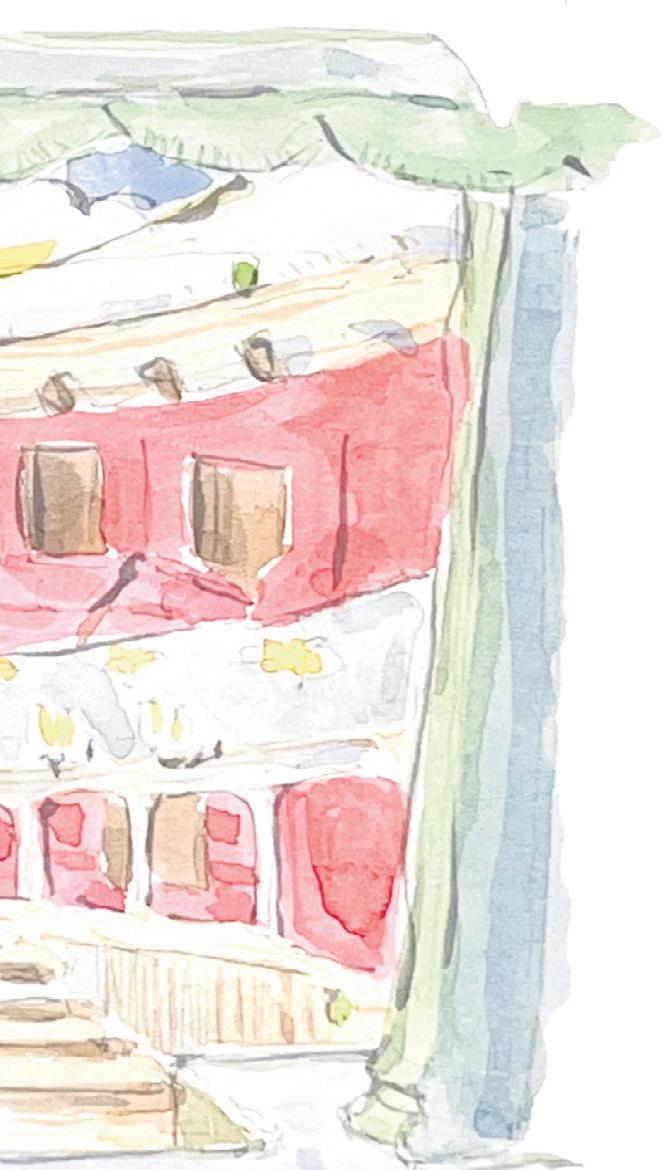
could soon be a past time we lose forever. In an era with online and at home streaming, and a myriad of other methods of entertainment at our ngertips, it is easy to overlook theatre as an option. It requires time, planning, and more commitment than watching something quickly on YouTube – which means that over the holidays, when we’re trying to relax, even those who go to see student plays in term time might not have the same incentive to go to their nearest theatre. However, commitment is exactly what makes theatre so crucial.
❝ Bury St Edmunds as not only a beautiful town, but also the host of a small but mighty theatre scene
▲IRIS CHAPMAN

e the and
My favourite play I’ve seen there so far is a retelling of Mary Shelley’s Frankenstein, wherein Frankenstein was portrayed by a woman. e makeup was brilliantly grotesque, the acting physical and disconcerting, the lighting and sets dramatic and macabre, and the jump scares were plentiful. e play intensely brought the loneliness and horror of Frankenstein’s monster’s existence to the fore. Cameron Robertson brought the heart wrenching, guttural desperation, and panic of the creature to life while still managing to create a feeling of the monster’s deep goodness, his love for nature and original wish to live a life he feels will earn him love. e sets were dramatic, intricate, gothic, and engrossing. e detail of Frankenstein’s lab, brains, and hands


jars, the spotlight on the central is is one show of quite a few I have seen at the e- a-
– and I can say they have all been cre- ative or interesting in some way, from audience participation, pantomime, to performing Jane Austen novels: there

e eatre Royal is a beautiful historic theatre, and one I would obvious-
ly recommend you make a day trip to





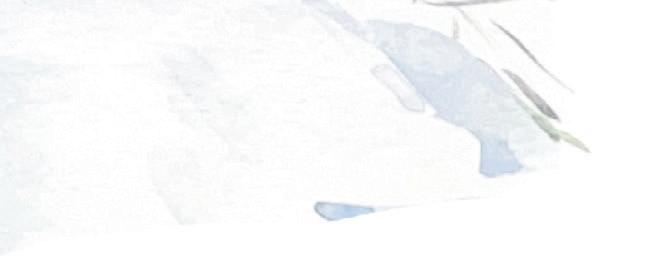
You can’t just pause a theatre show, you can’t rewind, you are there – in front of the stage, in front of real people. You are glued in front of the drama, there’s no screen to separate you, no place in the room you can look away and be distracted by a bird outside, your dog, or a text message. Instead, the whole room is in darkness but the stage, your phone is turned o (hopefully) and there is no mitigating division between you and the stage, making the drama more intense, more personal, and more


Whereas with a lm or TV your eyes are controlled by the camera, with theatre you have the freedom to notice all the details on your own. You are not prepared by movie genre conventions such as horror for the next jump scare, instead the shock is immediate. e object of fear, or laughter, or tears is in the room

eatre as a collective experience, as an unedited live performance, is a uniquely intense and ful lling art form; to lose this at any level would be a shame. e artistry and expertise that goes into theatre deserves our attention; supporting your local theatre might even expose you to new forms of theatre which we don’t see as often in the Cambridge theatre
if you can. But more than just a single theatre, it’s crucial that we continue not just to support the thriving theatre scene in Cambridge but also local theatres in our hometowns. eatre has never really since Covid, and many local theatres are severely underfunded and struggling more Without support and funding local theatre expertise




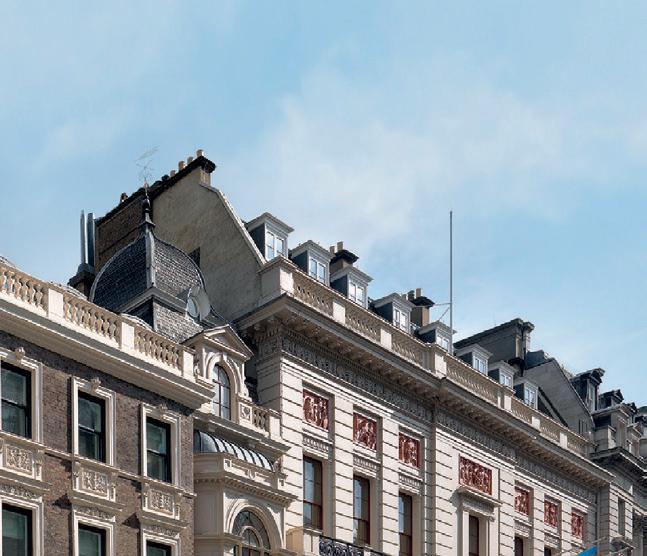



For nearly 200 years alumni have chosen to take up membership of a spacious and elegant private club in the heart of London. The Oxford and Cambridge Club in Pall Mall is the perfect place to meet for a drink, entertain friends and colleagues in magnificent surroundings, play squash, take a break, host a party or just find a quiet corner to prepare for a meeting. A thriving social scene, sports facilities, a lively calendar of events including talks, tastings, dinners and balls, an exceptionally well-stocked library, extensive wine cellars and more than 40 bedrooms mean our members use their club for recreation, relaxation and business - and now you can too.
For details on membership or a tour of the Club house on Pall Mall, please visit www.oxfordandcambridgeclub.co.uk or call 020 7321 5110 Oxford and Cambridge Club @oandcclub
TMcElduf argues that the audience is often the most surprising part of a performance
here’s a special kind of electricity in the air before a student theatre performance in Cambridge. he actors pace backstage, psyching themselves up. he audience shules in, some clutching plastic cups of wine, others scanning the programme to determine whether they need to feign intellectual appreciation. And then… it begins. A dramatic monologue unfolds, the tension builds – and suddenly, from the audience, a misplaced sneeze shatters the atmosphere. Or worse, a single chuckle at a line that was absolutely not meant to be funny. While these moments might be minor they can interrupt the absorbing reality of the play and be a harsh reminder of real life outside the plot. When audiences do more than just sneeze and cough, such as screaming and booing, the actors are put into a situation where they must make a choice: power through, adjust on the ly, or fully embrace the absurdity of live performance.
Cambridge theatre thrives on these unpredictable interactions. Unlike the (hopefully) polite silence of a West End audience, student theatre crowds bring an entirely diferent energy. here are the supportive friends who laugh just a little too loudly at inside jokes, the seasoned thespians in the front row nodding solemnly at a well-executed iambic pentameter, and the unfortunate individual who mistook the play for a social event and whispers commentary throughout. Performers quickly learn that no two audiences are the same, and each reaction – whether enthusiastic or bewildered – can change the rhythm of a scene.
While audience participation is not always planned, it is inevitable. Some productions might
even actively encourage interaction, breaking the fourth wall or inviting the audience to play a role
One of the great joys of student theatre is its willingness to experiment. Productions range from ambitious Shakespearean tragedies to bizarre, studentwritten comedies. Some performances dazzle with slick professionalism; others lean into delightful chaos. Regardless of the approach, audiences in Cambridge tend to be engaged, opinionated, and more than happy to debate a show’s themes at length in the bar afterwards.
But before an audience can react, they irst have to turn up. And in a university where students juggle supervisions, societies, and the perpetual feeling that they should be doing more, attracting a crowd is tricky. Cambridge theatre marketing is an art form in itself. Social media campaigns attempt to cut through the noise of endless event invites, lyering on King’s Parade becomes a delicate exercise in persistence, and the promise of “free sweets” remains a reliable – if slightly desperate – selling point.
Some productions go the extra mile, staging impromptu performances in public spaces or creating cryptic posters, such as that of Folie Circulaire, that spark curiosity (or confusion). Yet even with these eforts, some shows still play to half-empty houses, a reality that I assume student directors must learn to accept with a philosophical shrug. When a show does manage to ill the seats, the impact is undeniable. he buzz of a packed house fuels the actors, and every response – from raucous laughter to stunned silence – reinforces the magic of live performance. Some moments stick with actors long after the show is over: the gasp at a shocking

plot twist, the unexpected applause at a particularly poetic line, the well-meaning but devastatingly timed heckle that accidentally steals the scene.
For many students, theatre ofers a much-needed escape from the pressures of Cambridge life. Whether they are on stage, working behind the scenes, or simply watching from the stalls, the theatre scene provides a space for creativity, collaboration, and the occasional on-stage disaster that becomes infamous in student theatre circles. Cambridge theatre is also a launchpad for future professionals, with many alumni going on to careers in the arts. But even for those who never tread the boards again, the experience of being part of a live performance – whether as a performer or an audience member – leaves a lasting impression.
At the heart of it all, theatre is a shared experience. Without an audience, even the most meticulously rehearsed production is just a group of people talking to an empty room. So, if you ind yourself debating whether to spend an evening watching student theatre, take the chance. Support your fellow students, immerse yourself in the performance, and remember: your reactions might just shape the show itself. And if nothing else, there’s maybe free sweets.









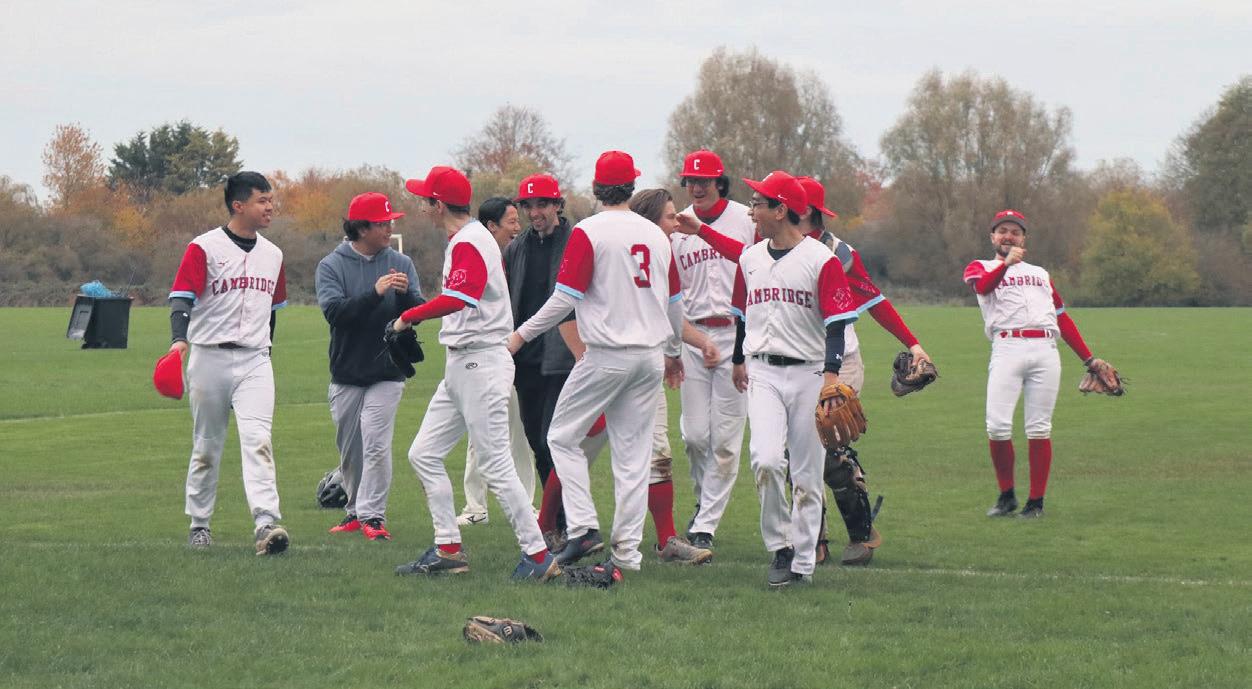
February drizzle and a sludgy Cambridge eld aren’t the usual backdrop for America’s summer sport. A regular ding of metal thwacking cork pierces the steady pitter patter of rain at Coldham’s Common; the player’s archetypally American jerseys at odds with the very British winter gloom. Rusting football goalposts and the steady whir of the airport radar tower preside over every pitch, run, and strike. e scene is surreal, but then so is the success story it conceals.
Last Sunday, the Cambridge University baseball team completed a ruthless 27-0 rout of an outclassed Loughborough 2s, securing a historic – and completely unprecedented – place in the BUCS national nals. In previous years, the Club has struggled to notch more than a single BUCS win; in 2025 they ended the league campaign with a display so crushingly dominant that their opponents opted to call the game early.
❝ e Club was ‘basically nonexistent’
Remarkable as their recent tabletopping achievements are, the adversity that the fringe club has had to slog through is what truly stands out. e very moment that the Cubs realised their national championships dream epitomised the continual hurdles of playing baseball in the UK that the team somehow manages to take in its stride. Sure, the usual mix of back slaps, Domino’s slices, and celebratory pints were deservedly savoured, But barely minutes after their landmark triumph, the team set to work derigging the backstop nets, dismantling the makeshift diamond and uprooting several foot-high metal poles, before lugging what had once constituted a baseball eld away for storage
using wagons – all amid bitter temperatures. Before every game, players spend around an hour constructing their makeshift means of play – transforming an otherwise “dire” patch of grass into a baseballing fortress, at which they are yet to lose a game this season.
Recent years have seen the Club struggle to scrape by, ghting for its future in the baseballing doldrums. Players keenly recall a not-too-distant past when the Club was “basically non-existent” and “unable to win a game”. Over the past three years, the Club has soldiered on with “maybe nine” players turning up to games and practices – the bare minimum for the nine-a-side sport. American college baseball teams have 34-playerstrong rosters for a reason. Alongside manpower di culties, nancial troubles have pestered the Cubs too, forcing the team to resort to crowdfunding just to stay a oat. ink of Cambridge sport, and those coveted light blue eeces instantly come to mind; one year, the (literally) bare-bones baseball club could not a ord uniforms to play in.
So, just how has this once marginal club, that doesn’t even have proper training facilities, become one of Cambridge’s breakout sporting successes?
In the words of big-hitting batter James Green, the “truly special” current captain Marc eberge and president JJ io have provided the key to unleashing Cambridge baseball’s true potential. e dynamic pairing have managed to nurture a ourishing programme almost out of thin air, luring some 50 people to last year’s trials – numbers that the Club could scarcely dream of only a couple of years ago. Baseball training facilities are typically extensive: think all-weather batting cages, state of the art pitching machines, and a slew of elding drills. While the Cubs are far from privy to these sorts of luxuries, the ever-resilient team has refused to be deterred. To facilitate bi-weekly practice sessions during the winter darkness at a oodlight-less Coldham’s Common, players have taken to strapping on head torches to satiate an evident hunger for improvement.
Delve deeper inside this extraordinary
❝
eir claim to computer game fame is surely unparalleled
Club, and there are some equally striking individual tales to be told. Captain Marc and Cubs whizz James Green juggle Cambridge’s academic rigours with semi-professional baseball, strutting their stu for British baseball’s most decorated team – the London Mets. Both formed an integral part of the Mets side that stormed their way to an eyewatering eighth consecutive National Baseball League title last season, with the Cubs’ skipper winning the competition’s coveted ‘Rookie of the Year’ award.
On top of the pair’s undoubted on- eld prowess, their claim to computer game fame is surely unparalleled among Cambridge student athletes. Amazingly, come 14 March baseball a cionados around the globe will be able to enlist Marc and James’ services in Out of the Park 26 as playable avatars. e very same month that their video game characters hit the shelves, Cambridge’s two baseball aces jet o to Italy and Norway to represent England. Unwilling to settle at national honours, James has his sights set at the very apex of the sporting world itself –striving to make the Great British roster for the 2028 Olympics. From being unable to buy kits and playing matches in a near-dystopian setting, to churning out a potential Olympian and having a very real shot at winning the national championships, you can’t help but be swept up by Cambridge University baseball’s astonishing rise. is is a team that continues to battle a unique set of obstacles, but somehow nds itself on the brink of something quite brilliant.

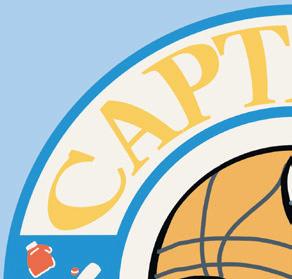





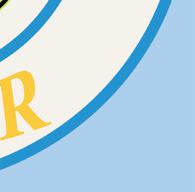
Why badminton?
It’s quite versatile. At a high level, it’s a fast sport (the fastest shot recorded is 565 km/h!), and the sport requires a good balance of skill, strength, endurance, and tactics. Equally, badminton can easily be played by complete beginners in a backyard. I really enjoy the social aspect of it as well, especially at university!
What has been your best sporting moment with the Cambridge University Badminton Club (CUBaC)?
BUCS Nationals last year! BUCS Nationals is a UK universitieswide tournament held in She eld every year. For us, if we reach the last 32 and also play Varsity W1, we achieve a Full Blue, so it’s a signi cant competition. Last year, ve of us from the women’s squad earned Full Blues.
What is your favourite part about being co-captain?
Seeing players improve! Plus, having an amazing co-captain (big shoutout to Joanna Li!) makes the job both easier, and incredibly fun.
What is the toughest thing about being co-captain?
De nitely the selection side of things. Spots on our main and development squads are limited, so unfortunately we have to turn away enthusiastic people at trials every year. Another di cult selection is for Varsity and BUCS Nationals. Sometimes the boundaries for each team can be very tough.
a Cambridge workload?
It does get quite busy trying to t in training, matches (and associated travel!), gym, and captain duties, alongside work, and life. But I nd that doing exercise and seeing everyone on the team is a good way to detach from work, and it makes me more productive when I actually do focus on work. Google Calendar has been essential, though!
How is this year going for the Club?
e whole women’s main squad is involved in BUCS matches. We have won all of our matches so far in both the league and the cup. Our biggest win last term was Mixed Varsity. is is played by two teams of three mixed pairs each. We beat Oxford 10-8 in matches overall. Cambridge hasn’t won this since 2015 (at least!), so it was a historical moment for us.
How can those interested in playing badminton at Cambridge get involved?
We hold trials once a year for the main and development squad for competitive players in Michaelmas. But there’s loads of other opportunities to play badminton. Most colleges will have weekly sessions, and have teams in both the College League, and Cuppers. We also host open club nights, Saturdays 6-8pm at Kelsey Kerridge with Main Squad members coaching. Signup info can be found on our Instagram, @c.u.badminton!


Which badminton player, past or present, would you most like to play doubles with?












How do you manage to balance your elite sport play with





Hans-Kristian Vittinghus, a Danish singles player. He retired a year or so ago, but his games were great to watch as he would never give up on any shot, and always pulled o some insane dives on court.





















What has been the coolest court you have played on in your career? It has to be when I trained for a week in China. It was supposedly the place where both Lin Dan (Olympic Gold 2008 & 2012) and Chen Long (Olympic Gold in 2016) had trained during their youth. Unfortunately, it was terribly warm when I went (35 ° C), extremely humid, and no air conditioning!




































Captain’s Corner pg.31 Cambridge









Rocio Leyva omas Sports Correspondent
When people walk into the Cambridge Union, they often expect to see expressive faces engaged in passionate debate. On 2 February, however, a shouting proposition speaker was replaced by a boxing ring in the centre of the chamber. Town vs. Gown, having run for over 30 years, is a staple of Cambridge University Amateur Boxing Club’s (CUABC) calendar, where the University’s ghters see themselves matched up against a ‘Town’ team, with boxers from gyms and universities across the nation. e event was sold out – I could only get tickets for the rst half, and it showed; the energy in the chamber was palpable. e setting made the night feel more like theatre than sport.
As someone whose boxing background is limited to having watched my friend at ‘Fight Night,’ I made sure to arm myself with an obliging Blues boxer buddy to gain a better grasp of the night’s matches. Yet the universality of the event was evident; the boxing was a display of sheer strength, athleticism, and the deep desire to win. Alongside a
large number of intra-CUABC matchups, Cambridge ended the night down 4-3 to the Town ghters, but the event represented a larger turning point for CUABC moving forward.
is year, the opposition had a strong contingent from Imperial College London. e rst bout was Ewan Turnbull’s debut ght for the CUABC, as he faced o against Imperial’s Xiao Yuanhao. Turnbull’s athleticism and reach were di cult to counter, and once Yuanhao was caught by a couple of hard blows, he found it hard to recover and reset, resulting in a technical knockout for Turnbull, much to the thrill of the crowd.
e tension emanating from Raheem Smith and Cameron Mencia during their walkouts ahead of a second CUABC-Imperial match made it sure to be an aggressive battle. Smith’s strategy of waiting to counter proved di cult against Mencia’s quick jabs, and the bout ended with a TKO in Mencia’s favour after some incisive hits.
With CUABC and Imperial at 1-1, we were treated to an all-Cambridge ght between Will Gardner and Christopher Lang. After walking out to Bob Marley’s ‘ ree Little Birds,’ Gardner used a dis-
tinctive movement style to compete with Lang’s strong connections in the rst round. However, as the weight behind Lang’s punches built, so did his momentum, and after some strong connections in the last ten seconds of the second round, Lang won on counts.
CUABC’s Aady Nagarajan’s fight against Imperial’s Ethan Cann was a step up in energy and attack, with Aady’s relentless punching drawing blood from all over Cann’s face. Nagarajan won on counts in the third round.
After four men’s ghts, we had our rst women’s clash. Cambridge’s Anna Townend and Shelly Lee were both technical and powerful. Even when faced with Lee’s fast footwork and critical blows, Townend kept relaxed and easily found counters. At the nal bell, Townend, the women’s captain, came away with the win on a split decision in what was a strongly contested bout. e rst half concluded with the last clash against Imperial, Cambridge’s Rhys Honey-Jones took on Joel Stoy. e punches were possibly the heaviest of the night, with greater connections and more controlled power on display than in any other match. Both demonstrated perfect technique, but Stoy’s hunt for big
hooks led him to knock out Honey-Jones in the second round, giving us a dramatic end to the rst period.
ough I had to leave before the second half, Cambridge continued their momentum. Club Treasurer Anna Yiu beat Izzy Webb Adams, and Brodie Gibson was overpowered by Enrico Mariotti in all-Cambridge bouts. e ght between Faith Cunningham and Bronwyn Jenkinson was Head Coach Mehmet Hamuza’s favourite of the night, describing it as “the most exciting,” as both ghters “put their heart and soul into the bouts.” For an audience member less literate in the world of boxing, the boxers' passion, technicality, and athleticism, made for a thrilling evening.
Towards the end of the night, Cole Buck of Triple A Boxing Club beat Cambridge’s Patrick Davies with an intense knockout, and Uday Manhas lost in a close ght against Stonebridge Boxing Club’s Benji Kaseba Katambwa, the CUABC ghter walking away with a black eye. Shuresh Saheli ended the event on a sweeter note, overpowering St Ives Boxing Academy’s Connor Coles.
Cambridge Coach Hamuza summed up the event, saying he couldn’t have


“asked for more from the boxers.” Club
President Spencer Lee Boya explained that we are experiencing “the best year for CUABC in recent times,” as despite facing “uncertainties” that left a chance that “the club would not have been able to even operate at all,” the tide has turned thanks to “one of the most competent and resilient student committees.”
CUABC can be very excited about its bright future. Participation numbers have skyrocketed, with 150 out of 160 people paying to continue boxing after an initial University taster session. Spencer also spoke proudly of the fact that no boxers have been injured in training this year, thanks to new safety measures and training plans. Town vs. Gown was certainly an eye-opening exhibition of this rejuvenated era for CUABC.
Coach Mehmet Hamuza’s tenet “you don’t lose in amateur boxing, you only learn” was displayed in its truest form at the Cambridge Union. Not only were the boxers able to boast their improvement from this year, but the club had a chance to show o a new chapter in its history –one that both nurtures the future of the Club yet can also yield fantastic results.